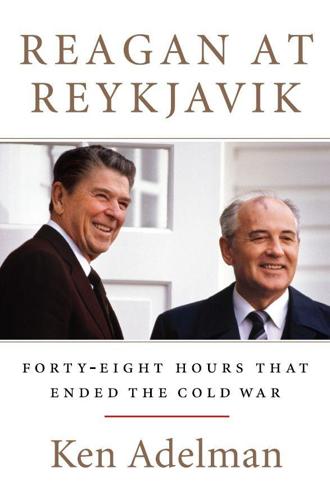
Reagan at Reykjavik: Forty-Eight Hours That Ended the Cold War
by
Ken Adelman
Published 5 May 2014
(Ronald Reagan Library) What Time called “the four most famous words of the Reagan presidency” were almost not spoken, owing to opposition from nearly all of Reagan’s aides. But he spoke them anyway, on June 12, 1987, at the Brandenburg Gate, a short distance from the Berlin Wall. Screens had been set up to protect him against any East German sniper. The president called out, “Mr. Gorbachev,” paused, and then repeated the name for emphasis—“Mr. Gorbachev—tear down this Wall!” It had an electrifying effect that day, and was evoked again when the Wall fell two years later. (Ronald Reagan Library) Raisa Gorbachev and Nancy Reagan were mostly just tolerating each other by the time of the welcoming ceremonies for the Gorbachevs’ arrival at the Washington Summit on December 7, 1987.
…
He later called Reagan “a stroke of luck for the world, especially for Europe.” But some traditional diplomats, even gifted ones, never grasped the power of public diplomacy nor the role that Reagan’s campaign to delegitimize the Soviet system played in bending history. George Shultz, in his thousand-plus-page memoir, Turmoil and Triumph: My Years as Secretary of State, makes no mention of Reagan’s speech that day. Nor does Jack Matlock in his book, Reagan and Gorbachev: How the Cold War Ended. Nor did Paul Nitze in his five-hundred-page memoir. Nonetheless, “Mr. Gorbachev, tear down this Wall” became the hallmark, if not the highlight, of Reagan’s foreign policy, and, as Time declared twenty years later, the most famous words of his presidency.
…
The president and the general secretary signed each copy in eight places, their sixteen signatures scrupulously guided by a hovering diplomat, who indicated just where they should sign. In the middle of this stilted procedure, Gorbachev turned to Reagan and, with an impish grin, asked if he might like to exchange pens. “Let’s keep these pens for memory’s sake,” he said. Reagan considered this a fine idea and smiled as they traded pens. LIKE MANY THINGS AFTER Reykjavik—including Reagan’s exhortation to “tear down this Wall” and the completion of the treaty itself—this East Room ceremony nearly didn’t happen. A glitch had suddenly arisen earlier that day. Under the treaty terms, each side had to furnish a photograph of its missile, so the other could know what to identify during its monitoring.
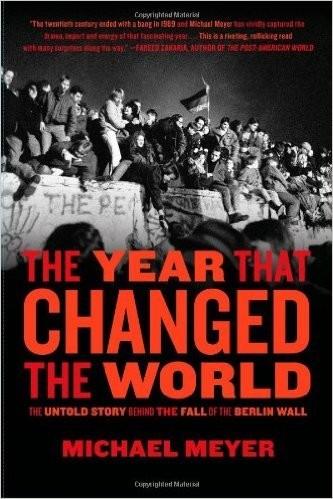
The Year That Changed the World: The Untold Story Behind the Fall of the Berlin Wall
by
Michael Meyer
Published 7 Sep 2009
Boyd, the New York Times, June 13, 1987, as well as retrospectives on the twentieth anniversary of the speech: Bild, “The Great Speech That Changed the World”; Associated Press, “Reagan’s ‘Tear Down This Wall’ Speech Turns 20”; Time, “20 Years After ‘Tear Down This Wall’ ”; American Conservative, review of Rise of the Vulcans, by Georgie Anne Geyer, June 7, 2004. For George H. W. Bush’s reaction to the fall of the Wall, see Michael R. Beschloss and Strobe Talbott, At the Highest Levels: The Inside Story of the End of the Cold War, 1993. Peter Robinson’s fascinating book, How Ronald Reagan Changed My Life, 2003, was a key source for the background on Reagan’s immortal speech. Additional references: Hoover Digest, “Tearing Down That Wall,” by Peter M.
…
“We stood our ground” for America as a “leading light, a guiding star, the greatest nation on the face of the Earth”—language inspired directly by Reagan. Then he concluded with the ultimate exculpation, as if he were a latter-day Saint Sebastian: “Ronald Reagan, too, was called a ‘warmonger,’ an ‘amiable dunce,’ an actor detached from reality. Yet within a few years after President Reagan left office, the Berlin Wall came down, the Evil Empire collapsed, the Cold War was won.” Everyone hears the echo. Everyone knows the reference. “Mr. Gorbachev, tear down this wall!” A generation of speechwriters wish they had crafted that clarion call. A generation of statesmen wish they had uttered it, among them many who belittled it at the time.
…
All this became magnified under the second Bush administration, particularly after September 11. Just as the new president took office modeling himself on Ronald Reagan, so did many senior officials around him, few more happily than those who had been marginalized during Reagan’s later years, or marginalized once more under the first Bush administration. Born-again, they resurrected the in-your-face rhetoric of early Reagan and amped it up. They made his myth—“Mr. Gorbachev, tear down this wall!”—into operational dictum. Traditional American idealism—the United States as a lamp unto nations, enjoying a special providence—morphed into a crude Manichaean dialectic: good versus evil, us versus them.
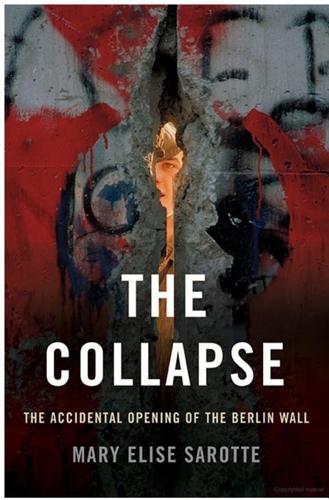
The Collapse: The Accidental Opening of the Berlin Wall
by
Mary Elise Sarotte
Published 6 Oct 2014
It is possible to research this speech in the original sources at the Reagan Library: see in particular RRPL, White House Staff Member and Office Files, Files of Peter M. Robinson, Files 1983–1988, Series I, Drafts, Box 9, Subject File, Notes from Berlin Pre-Advance. Also useful are the speechwriter’s own comments; see Peter Robinson, It’s My Party: A Republican’s Messy Love Affair with the GOP (New York: Warner Books, 2000), and Peter M. Robinson, “Four Words That Moved the World: ‘Tear Down This Wall,’” Wall Street Journal, June 9, 2012. See also Romesh Ratnesar, Tear Down This Wall: A City, a President, and the Speech That Ended the Cold War (New York: Simon and Schuster, 2009), which includes the text of the speech; the quotation from Reagan’s speech is at 210. 16.
…
Even decades later, the most famous call for an end to that division—delivered by Reagan himself on June 12, 1987—did not result in any opening of the barriers. Reagan made this call in a speech delivered at the same location in front of the Berlin Wall from which Brokaw would broadcast the actual, chaotic opening two and a half years later. In his address, Reagan challenged the Soviet leader personally: “General Secretary Gorbachev, if you seek peace . . . come here to this gate! Mr. Gorbachev, open this gate! Mr. Gorbachev, tear down this wall!”15 Despite these dramatic lines—which some of Reagan’s own advisors had attempted to cut from the speech because they found them too confrontational—no opening of the gate, or even tentative agreement or provision for a future opening, resulted.
…
To cite just two of the many examples: (1) Soviet expert Jonathan Haslam could still write that “Krenz . . . instructed that the barriers be raised” (Haslam, Russia’s Cold War [New Haven, CT: Yale University Press, 2011], 391); and (2) the volume on US foreign policy in the seemingly definitive Oxford University Press History of the United States series could state that, following the ouster of “the recalcitrant hard-liner Erich Honecker,” on “November 9, his successor opened the Berlin Wall to passage without visas” (Herring, From Colony to Superpower, 905). 35. The gist of this narrative is that when Reagan speaks, “even walls fall down,” as summarized in Ratnesar, Tear Down This Wall, 195. Ratnesar does acknowledge that factors other than Reagan’s speech played a role in the opening of the Wall and acknowledges the contributions of Germans themselves elsewhere in the book, so his book is not the most strident advocate of this view. 36. See, for example, Charles Maier, “What Have We Learned Since 1989?”
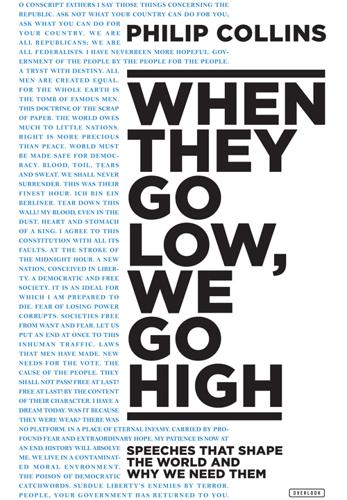
When They Go Low, We Go High: Speeches That Shape the World – and Why We Need Them
by
Philip Collins
Published 4 Oct 2017
Then the final two sentences that flow inexorably on to their conclusion in the speech’s title. This is his finest hour. You are on fire, sir. RONALD REAGAN Tear Down This Wall The Brandenburg Gate, Berlin 12 June 1987 The most successful electoral politician of any era of American politics, Ronald Reagan was, to use a coinage of George W. Bush, the most mis-underestimated president of modern times. He was also, as much as Wilson and Eisenhower, a war leader. Reagan’s war was the Cold War and it ended in a decisive victory. The Cold War was a war of ideas, a war conducted through cultural imperialism and fine words.
…
Kennedy: Ask Not What Your Country Can Do for You, Washington DC, 20 January 1961 Barack Obama: I Have Never Been More Hopeful about America, Grant Park, Chicago, 7 November 2012 Pericles: Funeral Oration, Athens, Winter, c. 431 BC David Lloyd George: The Great Pinnacle of Sacrifice, Queen’s Hall, London, 19 September 1914 Woodrow Wilson: Making the World Safe for Democracy, Joint Session of the Two Houses of Congress, 2 April 1917 Winston Churchill: Their Finest Hour, House of Commons, 18 June 1940 Ronald Reagan: Tear Down This Wall, The Brandenburg Gate, Berlin, 12 June 1987 Elizabeth I of England: I Have the Heart and Stomach of a King, Tilbury, 9 August 1588 Benjamin Franklin: I Agree to This Constitution with All Its Faults, The Constitutional Convention, Philadelphia, 17 September 1787 Jawaharlal Nehru: A Tryst with Destiny, Constituent Assembly, Parliament House, New Delhi, 14 August 1947 Nelson Mandela: An Ideal for Which I Am Prepared to Die, Supreme Court of South Africa, Pretoria, 20 April 1964 Aung San Suu Kyi: Freedom from Fear, European Parliament, Strasbourg, 10 July 1991 William Wilberforce: Let Us Make Reparations to Africa, House of Commons, London, 12 May 1789 Emmeline Pankhurst: The Laws That Men Have Made, The Portman Rooms, 24 March 1908 Isidora Dolores Ibárruri Gómez (La Pasionaria): No Pasarán, Mestal Stadium, Valencia, 23 August 1936 Martin Luther King: I Have a Dream, The March on Washington, 28 August 1963 Neil Kinnock: Why Am I the First Kinnock in a Thousand Generations?
…
General Secretary Gorbachev, if you seek peace, if you seek prosperity for the Soviet Union and Eastern Europe, if you seek liberalisation: Come here to this gate! Mr. Gorbachev, open this gate! Mr. Gorbachev, tear down this wall! The chief writer of this speech, Peter Robinson, struggled to formulate the best line. His first draft read: ‘Herr Gorbachev, bring down this wall.’ In the second draft he wrote ‘take down’ instead. Then he tried it in German: ‘Herr Gorbachev, machen Sie dieses Tor auf.’ Eventually, at a Berlin dinner party Robinson heard a lady called Ingeborg Elz almost supply the right phrase: take down that wall. That was when the trouble really started. Reagan had to contend with the opinions of so many advisers, not a problem Pericles ever had.
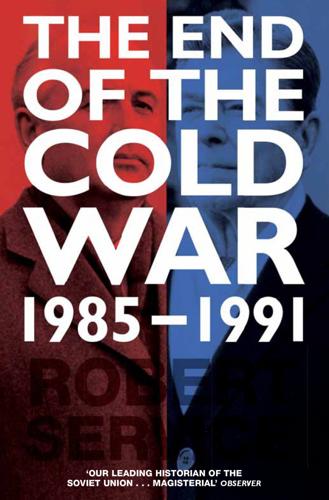
The End of the Cold War: 1985-1991
by
Robert Service
Published 7 Oct 2015
Pry, War Scare: Russia and America on the Nuclear Brink (Westport, CT: Greenwood Publishing Group, 1999) Qian Qichen, Ten Episodes in China’s Diplomacy (New York: HarperCollins, 2005) R. Ratnesar, Tear Down This Wall: A City, a President, and the Speech That Ended the Cold War (New York: Simon and Schuster, 2009) N. Reagan, My Turn (New York: Random House, 1989) R. Reagan, An American Life: The Autobiography (New York: Simon and Schuster, 1990) Reagan: A Life in Letters, ed. K. Skinner, A. Anderson and M. Anderson (New York: Free Press, 2003) The Reagan Diaries (London: HarperCollins, 2007) The Reagan Diaries Unabridged, vols 1–2 (New York: HarperCollins, 2009) The Reagan Files: The Untold Story of Reagan’s Top-Secret Efforts to Win the Cold War, ed.
…
Like Gorbachëv, he wanted a clear policy on how to deal with the potential fallout from the American President’s visit to West Germany in the following month. Shevardnadze asked his officials to help him plan for the future: ‘Reagan can propose the idea of the unification of Germany. Sharp reaction of our friends [in East Germany] to this idea. Think up long-term programme of work in this direction.’29 Reagan’s speechwriter Peter Robinson was drafting a speech exactly along the lines that Soviet leaders feared. Robinson wanted the President to say: ‘Mr Gorbachëv, tear down this wall!’ Although the phrase was not a summons to rebellion, it implicitly personalized responsibility for the changes that America wished to see in Eastern Europe.
…
Insisting that the source of the trouble lay in Moscow, he issued the following injunction: ‘General Secretary Gorbachev, if you seek peace, if you seek prosperity for the Soviet Union and Eastern Europe, if you seek liberalization: Come here to this gate. Mr Gorbachev, open this gate. Mr Gorbachev, Mr Gorbachev, tear down this wall!’ He gave a consummate performance. Every phrase, pause and repetition in the speech was managed for the greatest impact. He remarked that the Soviet leadership had entered serious talks because NATO had increased its military strength. He expressed the hope that one day the two halves of Berlin could jointly host the Olympic games.33 Pravda, in a break with precedent, avoided an expression of anger.34 Calm was the order of the day in Moscow, if not in East Berlin where Honecker went on TV to release his splenetic fury.
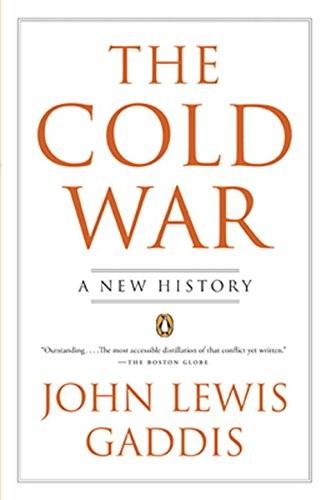
The Cold War: A New History
by
John Lewis Gaddis
Published 1 Jan 2005
Gorbachev’s emergence raised the possibility of convincing a Kremlin leader himself that the “evil empire” was a lost cause, and over the next several years Reagan tried to do this. His methods included quiet persuasion, continued assistance to anti-Soviet resistance movements, and as always dramatic speeches: the most sensational one came at the Brandenburg Gate in West Berlin on June 12, 1987, when—against the advice of the State Department—the president demanded: “Mr. Gorbachev, tear down this wall!”97 For once, a Reagan performance fell flat: the reaction in Moscow was unexpectedly restrained. Despite this challenge to the most visible symbol of Soviet authority in Europe, planning went ahead for the Intermediate-Range Nuclear Forces Treaty and the Washington summit later that year.
…
Robert Orwell, George Ostpolitik Pahlavi, Mohammad Reza Shah Paine, Thomas Pakistan Paul VI, pope “peaceful coexistence,” Pearl Harbor attack Peloponnesian War Pentagon Papers People’s Daily perestroika (restructuring) Perestroika (Gorbachev) Pershing II missiles Pervukhin, Mikhail Philby, Kim Philippines Pinochet, Augusto “Plastic People of the Universe,” Plumbers Poland John Paul II and 1989 election in rise of Solidarity in Soviet non-intervention in Politburo, Soviet Pol Pot Portugal Potsdam Conference of 1945 Powers, Francis Gary Prague spring Pravda Public Group to Promote Observance of the Helsinki Accords Quemoy and Matsu crises Radio Free Europe Rákosi, Mátyás Reagan, Ronald abolition of nuclear weapons proposed by attempted assassination of détente as target of “evil empire” speech of Gorbachev and at Reykjavik summit rise of SDI concept and Soviet Union visited by “tear down this wall” speech of U.S.-Soviet relations and Reagan Doctrine Red Guards Republican Party, U.S. Reykjavik summit of 1986 Rhee, Syngman Rice, Condoleezza Ridgway, Matthew B. Romania 1989 Revolution in Roosevelt, Franklin D.
…
For the drafting of this speech, see Richard Pipes, Vixi: Memoirs of a Non-Belonger (New Haven: Yale University Press, 2003), pp. 197–200. 66 Speech to the National Association of Evangelicals, Orlando, Florida, March 8, 1983, Reagan Public Papers, 1983, p. 364; Ronald Reagan, An American Life (New York: Simon and Schuster, 1990), pp. 569–70. 67 The figures are in Gaddis, Strategies of Containment, pp. 393–94. 68 Lettow, Ronald Reagan, p. 23; Reagan, An American Life, p. 13. 69 Radio-television address, March 23, 1983, Reagan Public Papers, 1983, pp. 442—43. 70 Ibid., p. 364. Lettow, Ronald Reagan, provides the best discussion of Reagan’s nuclear abolitionism. 71 Dobrynin, In Confidence, p. 528. 72 Ibid., p. 523. 73 Christopher Andrew and Oleg Gordievsky, KGB: The Inside Story of Its Foreign Operations from Lenin to Gorbachev (New York: HarperCollins, 1990), pp. 583–99. 74 Raymond Garthoff, The Great Transition: American-Soviet Relations and the End of the Cold War (Washington: Brookings Institution, 1994), pp. 118–31. 75 Ibid., pp. 138—41; Don Oberdorfer, From the Cold War to a New Era: The United States and the Soviet Union, 1983–1991, updated edition (Baltimore: Johns Hopkins University Press, 1998), pp. 65—68. 76 Radio-television address, January 16, 1984, Reagan Public Papers, 1984, p. 45.
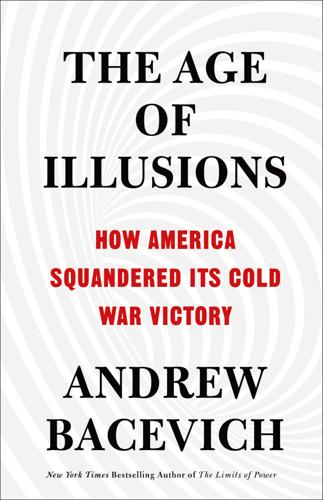
The Age of Illusions: How America Squandered Its Cold War Victory
by
Andrew J. Bacevich
Published 7 Jan 2020
For journalists and politicians alike, the Wall itself had long served as a made-to-order prop. Cinder block, barbed wire, armed guards, and German shepherds straining at the leash all combined to constitute a perfect metaphor for the Cold War. For this very reason, from John F. Kennedy (“Ich bin ein Berliner.”) to Ronald Reagan (“Mr. Gorbachev, tear down this wall!”), a succession of U.S. presidents intent on scoring propaganda points had made good use of the barrier’s visual potency, denouncing it as an affront to freedom, democracy, and human decency (even as they tacitly accepted its existence). Now festooned with dancing, singing, Sekt-swilling, sledgehammer-wielding young Germans, the Wall was undergoing a radical reconceptualization before a worldwide audience in real time.
…
Dick and Ron Put Things Right Nothing better illustrates the process by which postwar normalcy was restored than the presidencies of Richard Nixon and Ronald Reagan. During the Cold War, only three presidents managed to win two terms. Nixon and Reagan were two of those three. Their electoral success was well deserved: Nixon and Reagan were, in fact, the nation’s two most consequential chief executives of the late twentieth century, even if more recent events have greatly diminished their legacies. Many Americans today revile Nixon; as many remember Reagan fondly. For our purposes, their personal reputations are irrelevant, as are their lapses while in office.
…
Rubio ran as the self-appointed heir of Ronald Reagan. Cruz went Rubio one better. He ran as the self-designated heir of Jesus Christ. Present-day Republicans tend to remember Reagan’s actual record selectively. Much the same applies to their adherence to Christ’s teachings. In this regard, Rubio and Cruz did not disappoint. Depicting Reagan as the best president in recent memory and Obama as the worst, Rubio used the Gipper’s first successful presidential campaign as a prototype for his own effort in 2016. In effect, Rubio ran against Jimmy Carter—or against the image of Carter that Reagan had successfully contrived in 1980.
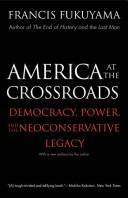
America at the Crossroads: Democracy, Power, and the Neoconservative Legacy
by
Francis Fukuyama
Published 20 Mar 2007
The latter position was shared by people on the left who had some sympathy for the socialist aims of communism and disagreed only with the means, and by realists on the right who accepted communism as another form of government to which Western democracies would have to accommodate themselves. Neoconservatives after Vietnam simply continued to bear the torch of the earlier Cold War view about communism as a unique evil. Ronald Reagan was ridiculed by sophisticated people on the American left and in Europe for labeling the Soviet Union and its allies an "evil empire" and for challenging Mikhail Gorbachev not just to reform his system but to "tear down this wall." His as- The Neoconservative Legacy sistant secretary of defense for international security policy, Richard Perle, was denounced as the "prince of darkness" for this uncompromising, hard-line position; and his proposal for a double zero in the intermediate-range nuclear forces negotiations (that is, the complete elimination of medium-range missiles) was attacked as hopelessly out of touch by the bien pensant centrist foreign policy experts at places like the Council on Foreign Relations and the State Department.
…
But it should be clear that the neoconservative heritage was a complex one that had multiple strands, and that the specific policy implications for how to deal with China, Iraq, or the Europeans that one could derive from the underlying principles were not necessarily those chosen by Kristol and Kagan. WAS RONALD REAGAN A NEOCONSERVATIVE? IS GEORGE W. BUSH? The intertwining of neoconservatives with the mainstream conservative movement in America from the 1980s on raises some The Neoconservative Legacy interesting questions about who qualifies as a neoconservative. Kristol and Kagan explicitly claimed the mantle of Reaganism and sought to derive their foreign policy from his. To what extent is the foreign policy of George W. Bush simply a continuation of the tradition of Reaganism, and, to that extent, does it qualify President Bush as a neoconservative?
…
On one level, it seems somewhat odd to call either Reagan or Bush a neoconservative. Neoconservatives were in their origin (mostly) Jewish intellectuals who loved to read, write, argue, and debate; in a sense, it was their intellectual brilliance, their ability to reflect, and the nuance and flexibility associated with intellectual debate that was most notable about them, and what set them apart from the paleoconservatives. Of the two presidents in question, Ronald Reagan in my view more clearly qualifies as a neoconservative. Much as his enemies are loath to admit it, Ronald Reagan was an intellectual of sorts: in the first decade or so of his career, all he had to offer were ideas and arguments about communism and the free market, American values, and the defects of the reigning liberal orthodoxy.
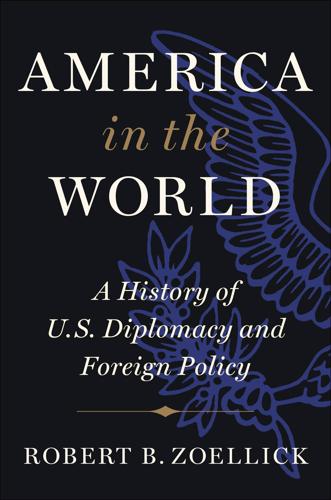
America in the World: A History of U.S. Diplomacy and Foreign Policy
by
Robert B. Zoellick
Published 3 Aug 2020
He had written personal letters to the three Soviet leaders who had preceded Gorbachev—Leonid Brezhnev, Yuri Andropov, and Konstantin Chernenko—although he had been disappointed by their stolid replies. He could not make progress, he used to joke, “if they keep dying on me.” The rise of Gorbachev in early 1985 changed the dynamic. Even as Reagan built his relationship with the younger Soviet president, the U.S. president’s rhetorical diplomacy continued to frame U.S. strategy. In June 1987, Reagan stood before the Brandenburg Gate in Berlin and declared, “Mr. Gorbachev, tear down this wall!” The president’s secretary of state, national security adviser, and most senior White House staff argued vigorously to cut the line. They worried that the president would look foolish, embarrass West German chancellor Helmut Kohl, anger Gorbachev, and stir up false hope in East Germany.
…
Link, “The Higher Realism of Woodrow Wilson,” Journal of Presbyterian History 41, no. 1 (March 1963), 1–13; Ernest May, The World War and American Isolation: 1914–1917 (Cambridge, MA: Harvard University Press, 1959), 437; Francis Gavin, “The Wilsonian Legacy in the Twentieth Century,” Orbis 41, no. 4 (Autumn 1997), 632; David Halberstam, The Best and the Brightest (New York: Random House, 1972), 56. More broadly, see Martin Walker, “Woodrow Wilson and the Cold War: ‘Tear Down This Wall, Mr. Gorbachev,’” in Cooper, Reconsidering Woodrow Wilson, 279, 282. 77. See Throntveit, Power Without Victory, though WW did not consider himself to be a “pragmatist” (see 10). See also idem., “ ‘Common Counsel’: Woodrow Wilson’s Pragmatic Progressivism,” in Cooper, Reconsidering Woodrow Wilson, 25. 78.
…
See George Shultz, foreword in Skinner, Reagan, in His Own Hand, x for MacFarlane; Brands, Reagan, 734. 29. Cannon, President Reagan, 26; Brands, Reagan, 734 (flattered); Rowland and Jones, Reagan at Westminster, 30 (themes). 30. Skinner, Reagan, in His Own Hand, especially 4–14. 31. Rowland and Jones, Reagan at Westminster, 38; see Skinner, Reagan, in His Own Hand, ix for Shultz. 32. Brands, Reagan, 734; see Skinner, Reagan, in His Own Hand, ix for Shultz. 33. Hayward, Age of Reagan, 3–4; Brands, Reagan, 157. 34. Hayward, Age of Reagan, 3; Brands, Reagan, 12, 725. 35. Brands, Reagan, 734; Cannon, President Reagan, 12. 36.
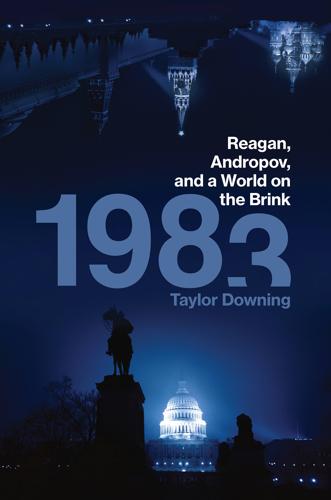
1983: Reagan, Andropov, and a World on the Brink
by
Taylor Downing
Published 23 Apr 2018
Then, reaching his climax, and to growing cheers from the Berlin crowd, Reagan, with his actor’s sense of timing, called out, ‘Mr Gorbachev, Mr Gorbachev, tear down this wall!’23 The speech did much to revive his reputation as a Cold War warrior. And it forever linked Reagan with the fall of the Wall, even though this came two years later, in very different circumstances and well after he had left the White House. The result of the intense diplomacy between Shultz and Shevardnadze came in the Washington summit, held more than two years after the first in Geneva. Reagan had hoped to invite Gorbachev to a triumphant tour of the US, starting in Washington and culminating in a few days on his ranch in California.
…
There are slightly different accounts of this meeting by those present but the gist is exactly the same, that the Joint Chiefs of Staff were keen to find a way around the MX impasse and eagerly put forward the defence initiative, that McFarlane took this up with enthusiasm, and that Watkins used the final phrase about ‘protecting’ rather than ‘avenging’ the American people. 16 Reagan, The Reagan Diaries, p.130. 17 Cannon, President Reagan, pp.330–1. 18 Reagan, The Reagan Diaries, p.139. 19 REAGAN: Address to the Nation on Defense and National Security, 23 March 1983. 20 Reagan, The Reagan Diaries, p.140. 21 Fitzgerald, Way Out There in the Blue, p.210ff; and Morgan, Reagan, p.218. 22 Dobrynin, In Confidence, p.528. 23 Pravda, 27 March 1983, quoted in Isaacs and Downing, Cold War, pp.390–1. 6 Lack of Intelligence 1 NSA: CIA Biographical Profile of Yuriy Vladimirovich Andropov, 11 January 1983. 2 Gates, From the Shadows, p.199. 3 Ibid., pp.203–7. 4 Ibid., p.238. 5 Reagan, An American Life, p.551. 6 FLASHBACK: Interview with Robert Gates. 7 Gates, From the Shadows, p.259. 8 George Shultz, Turmoil and Triumph, p.5. 9 Ibid., p.165. 10 Dobrynin, In Confidence, pp.484–5. 11 Reagan, The Reagan Diaries, p.131. 12 Dobrynin, In Confidence, pp.517–22. 13 Reagan, An American Life, p.551. 14 Gates, From the Shadows, p.264. 7 Double Agents 1 In line with most of the Soviet bloc intelligence organisations, officers in the KGB held military ranks.
…
Johnson, American Cryptology during the Cold War, 1945–89: Book IV, Cryptologic Rebirth 1981–89, National Security Agency, 1999, Top Secret, p.271ff. 6 Lawrence Freedman, The Cold War, p.190ff. 7 Garthoff, The Great Transition, p.35. 8 NSA: Reagan’s Nuclear War Briefing Declassified; and Reed, At the Abyss, p.242. 9 Reagan, An American Life, p.258. 10 Speakes, Speaking Out, p.8. 11 There was some confusion over exactly what Weinberger had done, as he had put SAC on a higher alert but had not increased the DEFCON standing of the military as a whole; see Fitzgerald, Way Out There in the Blue, pp.170 & 515. 12 Reagan, An American Life, p.269. 13 Ronald Reagan, The Reagan Diaries, pp.14–15. 14 Reagan, An American Life, pp.272–3. 15 NSA: Reagan’s Nuclear War Briefing Declassified, Briefing Book no. 575: Documents 12 & 13. 16 Reed, At the Abyss, p.243. 17 Ibid., p.244. 18 Ibid., p.244. 19 NSA: Reagan’s Nuclear War Briefing Declassified, Briefing Book no. 575: Documents 15, 16 & 17. 20 Reagan, An American Life, p.13. 21 Ibid., p.550. 22 Ibid., p.257. 23 REAGAN: Address at Commencement Exercises at Eureka College, Illinois, 9 May 1982. 24 Anatoly Dobrynin, In Confidence, p.502. 25 Reagan, The Reagan Diaries, p.75. 26 Nate Jones, Able Archer 83, p.9. 27 REAGAN: Address to Members of the British Parliament, 8 June 1982. 28 REAGAN: Remarks at the Annual Convention of the National Association of Evangelicals in Orlando, Florida, 8 March 1983. 29 Reagan, An American Life, p.570. 4 Operation RYaN 1 The story was later told by General Adrian Danilevich to American Defense officials after the Cold War; see NSA: John G.
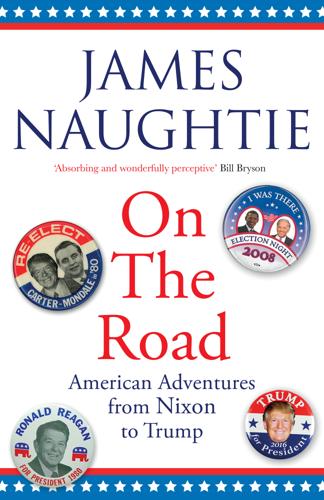
On the Road: Adventures From Nixon to Trump
by
James Naughtie
Published 1 Apr 2020
He’d seen it all in the second half of the Cold War – exchanges of spies on the Glienicke Bridge, escapes across the wall, the to-and-fro exchanges between the occupying powers in West Berlin and the Soviets in the East. He was at the Brandenburg Gate in 1987 when Reagan delivered his famous line, ‘Mr Gorbachev, tear down this wall.’ It pleased Kornblum, not least because he had written it. Looking back, he remembers it as a message not so much to Moscow, but to the West German government in Bonn. I thought up the Reagan speech and I organised it. We did it for one very specific reason, because at that time there was again a change of eras. It was the end of the Soviet Union, the one country that would profit the most from the end of the Soviet Union was trying to prop it up, and that was Germany.
…
Gary Sick, who had worked on the National Security Council, published an account a decade later in which he claimed that Reagan’s campaign manager William Casey, who had a background in intelligence and was appointed as CIA director after the election, brokered a deal with Tehran in the course of the campaign that promised arms deliveries via Israel if the hostages were kept safe and only released after Reagan had been elected, thereby avoiding an ‘October Surprise’ that could have handed Carter the election in a moment of national celebration at a prisoners’ homecoming. Barbara Honegger, who worked on Reagan’s campaign, supported the thrust of Sick’s theory. Two separate congressional investigations in the 1990s, however, failed to produce clinching evidence, leaving the case unproven.
…
When Americans decide to be formal, they go for broke: everyone at this union dinner appeared to be wearing patent leather shoes, and their tuxedos were sharp. Here was a gathering of political heavyweights on the Democratic side, but taking place in Michigan, a state that Reagan had won by a huge margin. The extent of Reagan’s blue-collar support in 1980 had shocked them, and they suspected, rightly, that there was much more of that to come. That explained the downbeat quality of the evening. Mondale’s speech was routine and flat. It lacked fire, surprisingly from someone who was purporting to be ready to take on Reagan, but it was obvious that in the UAW the Carter years were not seen as good ones for the men who built America’s cars, however much they might pay homage to Mondale’s support for organised labour throughout his time in public life.
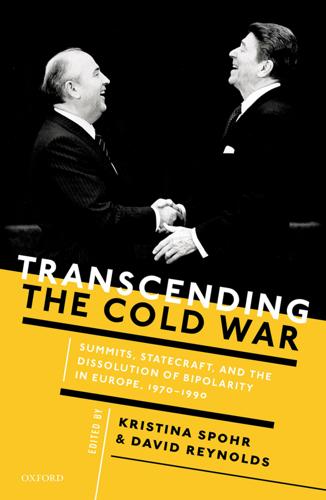
Transcending the Cold War: Summits, Statecraft, and the Dissolution of Bipolarity in Europe, 1970–1990
by
Kristina Spohr
and
David Reynolds
Published 24 Aug 2016
But Shultz still had to battle with administration hawks and opponents on Capitol Hill and to convince the president’s alter ego that the Soviets were serious. Privately Reagan assured his old friend William Buckley, a noted anti-communist ideologue, in May: ‘I have not changed my belief that we are dealing with an “evil empire”.’ And he kept up the propaganda war with a rousing speech in front of the Berlin Wall at the Brandenburg Gate on 12 June. Challenging the Soviet leader to show that perestroika and glasnost were more than ‘token gestures’, the president called for one ‘unmistakable’ sign of his commitment to ‘freedom and peace’: ‘Mr Gorbachev, tear down this wall!’ He had made this demand many times before but repeated it in this headline-catching venue to show he was not a politically crippled president and to prove his continued toughness in dealing with Moscow.82 Shultz also had to secure the agreement of America’s NATO allies for the ‘double-zero’ deal on INFs and SRINFs in Europe.
…
‘Letter, Ronald Reagan to Liuba Vaschenko, 11 October 1984’, in Kiron Skinner, Annelise Anderson, and Martin Anderson, eds, Reagan: A Life in Letters (New York, 2003), 380. 8. Ronald Reagan Presidential Library, Simi Valley CA (henceforth RRPL), Robert McFarlane files, Reorganized Archival Collection (henceforth RAC) Box 3, Memorandum, Shultz to Reagan: USG-Soviet relations, 3 March 1983. 9. Paul Lettow, Ronald Reagan and his Quest to Abolish Nuclear Weapons (New York, 2005), xi, 37–8. 10. John F. Burns, ‘Gromyko rejects Reagan arms plan’, New York Times, 3 April 1983, 10. 11. Reagan, Address to the Nation on the Soviet Attack on a Korean Civilian Airliner, 5 September 1983, The American Presidency Project (henceforth APP) website, http://www.presidency.ucsb.edu/ws/index.php?
…
Hoffman, The Dead Hand, 235, 237. 38. Ronald Reagan, The Reagan Diaries (New York, 2007), 383. 39. ‘Memorandum, Poindexter to Reagan, Gorbachev’s handwritten letter, 15 February 1986’, copy at http://endofcoldwarforum.org/sites/default/files/docs/reagan/STY-1986-02-15.pdf. 40. RRPL, Robert E. Linhard files, RAC Box 6, Memorandum, Paul Nitze: Transition to defense, 4 April 1985, 2–3. 41. RRPL, Robert E. Linhard files, RAC Box 6, Email, McFarlane to Linhard: SDI, 30 March 1985. 42. RRPL, Robert McFarlane files, RAC Box 1, Memorandum, William Clark to Reagan: The anti-nuclear movement, 22 April 1982, 4. 43.
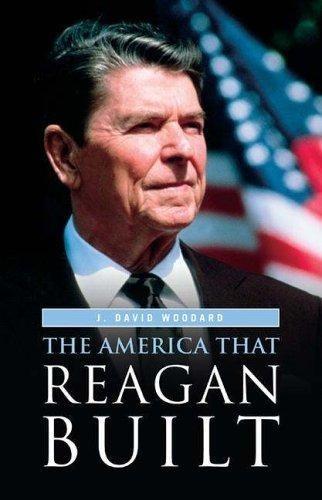
The America That Reagan Built
by
J. David Woodard
Published 15 Mar 2006
There, before a worldwide audience, he challenged the Soviet Union to make good on its proposals for world peace. ‘‘If you seek liberation: Come here to the gate! Mr. Gorbachev, open this gate! Mr. Gorbachev, tear down this wall!’’56 The speech was the most impressive since John Kennedy confronted the Soviet Union at the same place, but this time the United States stood poised to vanquish its adversary. Reagan seemed to have the momentum in negotiations as well as rhetoric, but in the Washington summit that December, it was Gorbachev who was the media 100 THE AMERICA THAT REAGAN BUILT star. After meeting with Nikita Khrushchev in Vienna, President John F. Kennedy described him as ‘‘rude and savage,’’ with a ‘‘vicious and sneering manner.’’57 That was the stereotype of Russian leaders until Gorbachev came to Washington.
…
After the attempted assassination of her husband, Nancy Reagan began regular consultations with an astrologer, Joan Quigley, whose charts helped set the president’s schedule.40 Ronald Reagan was casual in his superstitions, but Nancy Reagan became convinced that Quigley’s advice had protected her husband from repeated assassination attempts. Real and imagined dangers led the White House to defer final acceptance for any event until Mrs. Reagan had approved. Much of the Bitburg fiasco was attributable to Nancy Reagan’s superstitions, and the world will never know how much of the Iran-Contra mismanagement was a consequence of Nancy Reagan and her astrologer.
…
After rambling through several topics, Reagan looked into Gorbachev’s eyes and told him: ‘‘I do hope for the sake of our children that we can find some way to avert this terrible, escalating arms race.’’ Then he paused, and Gorbachev, thinking Reagan was finished, opened his mouth to speak, but the president was not through: ‘‘because if we can’t America will not lose it, I assure you.’’52 98 THE AMERICA THAT REAGAN BUILT President Reagan and Soviet General Gorbachev at the first Summit in Geneva, Switzerland, November 19, 1985. (Courtesy, Ronald Reagan Presidential Library) Reagan continued staring into Gorbachev’s eyes while the Russian interpreter translated his words.
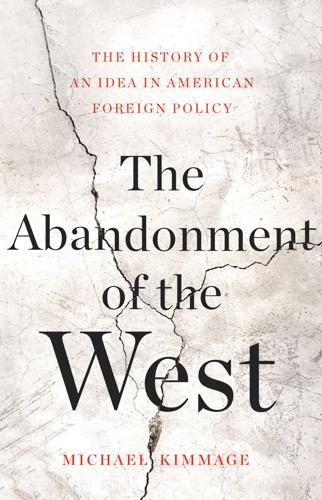
The Abandonment of the West
by
Michael Kimmage
Published 21 Apr 2020
After November 1989 when the Berlin Wall fell and the Cold War effectively evaporated, Reagan’s 1987 speech would be remembered not for the call to create a safer, freer world in cooperation with the Soviet East—and still less for its call to make Berlin the air transportation hub of Europe. It would be remembered for one simple phrase: “Mr. Gorbachev, tear down this wall.”21 REAGAN WAS NO hero to academics, and in the 1980s American academia and the White House were as out of sorts as they had been in the late 1960s and early 1970s. American academia was outgrowing the West. In November 1968, San Francisco State College students protested for a School of Ethnic and Area Studies.
…
It was the unconditional surrender of the East (minus China) and the ideological victory of the West, or perhaps it would be more accurate to say civilizational victory, even if civilization was far less common a cultural and political category in 1989 than it had been in the 1940s and 1950s. A Reagan administration official would equate the end of the Cold War with the end of history itself. Reagan’s optimism obscured much history that was not triumphant. It obscured the political divisions over Vietnam, which by the 1970s were divisions about American politics, American culture, American society. Reagan was a polarizing president in the 1980s, just as he had been a polarizing governor of California in the late 1960s and early 1970s. At the Reagan-era universities, the culture wars signaled the discontents of many students and professors. They would not endorse Reagan or the Cold War as the United States had learned to fight it.
…
Partially in response to a culture in flux, the conservative movement from which Reagan’s thinking and his campaign had emerged thrilled to Reagan’s presence in the White House while despairing about the direction of Reagan’s America, which was ever drifting away from the ideals and the hierarchies of the Columbian Republic. Unlike Kennedy’s or Truman’s, Reagan’s optimism about the West was conservative. It was not a bipartisan affiliation, and it was everywhere contested. Unifying a figure as he was for conservatives, Reagan was also anomalous as an American conservative, and to a degree he was anomalous in his attitude toward the West.
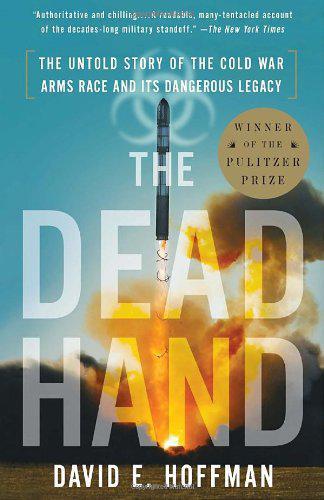
The Dead Hand: The Untold Story of the Cold War Arms Race and Its Dangerous Legacy
by
David Hoffman
Published 1 Jan 2009
"General Secretary Gorbachev," Reagan declared, "if you seek peace--if you seek prosperity for the Soviet Union and Eastern Europe--if you seek liberalization, come here, to this gate. Mr. Gorbachev, open this gate. Mr. Gorbachev, tear down this wall!" The speech was classic Reagan, infused with his powerful faith in freedom and prosperity and the link between the two. Reagan recalled in his memoir that when he saw the wall, he spoke with genuine anger in his voice. Gorbachev still did not entirely understand Reagan, nor his rhetoric, and called Chernyaev a few days later. "He is trying to provoke us, to make us snap, which would help them get the Soviet threat back. If, like Reagan, I was giving interviews every week, I would say that he hasn't forgotten his previous occupation over these eight years."35 Gorbachev's retreat from the arms race led to confusion not only in the military but in the prestigious defense institutes and design bureaus.
…
.: Public Affairs Press, 1969), pp. 212, 219-221. 11 The author covered the Reagan campaign as a reporter for Knight-Ridder newspapers, and never picked up on Reagan's nuclear abolitionist views. Yet his thinking was expressed in earlier years. See Reagan's 1963 speech text, "Are Liberals Really Liberal?" in Reagan in His Own Hand, and Reagan's address to the 1976 Republican National Convention, Anderson, pp. 69-71. 12 Reagan, "Peace: Restoring the Margin of Safety," address to the Veterans of Foreign Wars Convention, Chicago, August 18, 1980. 13 David Hoffman, "Reagan's Lure Is His Optimism," Detroit Free Press, Summer 1980. 14 Reagan, An American Life, p. 267. 15 Anatoly Dobrynin, In Confidence: Moscow's Ambassador to America's Six Cold War Presidents (New York: Times Books, 1995), p. 484. 16 Lou Cannon, Ronald Reagan: The Role of a Lifetime (New York: Simon & Schuster, 1991), pp. 299-301.
…
Oberdorfer, who covered the trip for the Washington Post, reports that Gorbachev said he would be willing to reduce existing nuclear weapons to zero on condition the two sides stopped the "militarization of space," Don Oberdorfer, From the Cold War to a New Era (Baltimore: Johns Hopkins University Press, 1998), p. 137. 66 Reagan diary, Nov. 5, 1985. 67 Reagan diary, Nov. 6, 1985. 68 Reagan, An American Life, p. 632. 69 Sagdeev, pp. 268-269. 70 Gates, p. 358. 71 Matlock, pp. 134-135, 158. 72 Oberdorfer, p. 143. 73 Reagan, An American Life, p. 635. 74 This account of the summit meetings is based on the official U.S. minutes, unless otherwise specified. 75 Gorbachev, p. 406. 76 Reagan diary, Nov. 19, 1985. 77 Reagan, An American Life, p. 636. 78 Gorbachev, p. 408. 79 Dobrynin recalls that this agreement for reciprocal visits was precooked quietly by him, p. 589. Reagan had also envisioned meeting again.
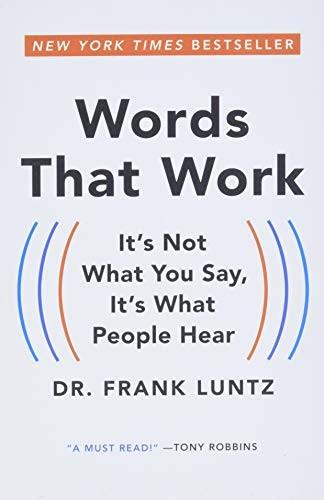
Words That Work: It's Not What You Say, It's What People Hear
by
Dr. Frank Luntz
Published 2 Jan 2007
Restore hope (“The only thing we have to fear is fear itself”) . . . Inspire a generation (“Ask not what your country can do for you; ask what you can do for your country”) . . . Urge personal responsibility (“Be the change you wish to see in the world”) . . . End tyranny (“Mr. Gorbachev, tear down this wall”) . . . Dream dreams (“Some men see things as they are and ask why; I dream of things that never were and ask, why not”). If a face can launch a thousand ships, a few good words can change history. And what all those great phrases of the ages have in common is in their inspirational and aspirational tone: each is positive, uplifting, and delivers a call to action.
…
If unemployment and inflation are up and confidence in the future is down, telling voters that life has gotten worse, while clearly factual, is less effective than asking voters “Are you better off today than you were four years ago?” Ronald Reagan asked Jimmy Carter and the tens of millions of debate listeners this devastating political question in their only face-to-face campaign encounter in 1980. No litany of economic data or political accusation could carry the power of a simple rhetorical question that for most Americans had an equally simple answer. “Are you better off” framed not just the debate, held only five days before the election, but the entire campaign, and it propelled Reagan from dead even to a nine-point victory over the incumbent Carter. An even simpler question was posed hypothetically by former House Speaker Newt Gingrich in the months leading up to the 2006 midterm elections.
…
When the pictures are powerful and emotional, they override if not completely drown out the sound. I mean it, Lesley. Nobody heard you.”12 The happy pictures of President Reagan—looking strong and amiable and, well, presidential—undermined the context for Stahl’s harsh critique. Providing proper context is rule number one of communication, but visual impact can obliterate rule number one. A visual context that supports and reinforces your language will provide a multiplier effect, making your message that much stronger. And, as the Stahl-Reagan anecdote illustrates, a striking visual context can overwhelm the intended verbal message entirely. It’s no accident that contemporary politicians have learned to array American flags in the background of their press conferences or speak in front of themed backdrops, pronouncing the subject and message just in case the speech doesn’t make it abundantly clear.
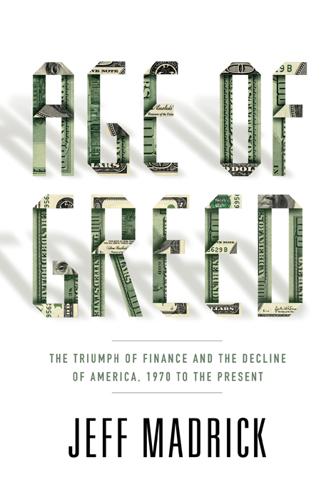
Age of Greed: The Triumph of Finance and the Decline of America, 1970 to the Present
by
Jeff Madrick
Published 11 Jun 2012
Also, Jeff Madrick, “Time for a New Deal,” New York Review of Books, September 25, 2008. 13 MANY CLAIMED, DESPITE THE LOW WAGES: See, for example, economist Jason Furman, http://www.slate.com/id/2144517. 14 SUCH AS COSTCO: See, for example, Christine Fey, “Costco’s Love of Labor,” Seattle Post-Intelligencer, March 29, 2004, http://www.seattlepi.com/business/166680_costco29.html. 15 MCKINSEY, THE CONSULTING FIRM: James Hoopes, “Tear Down This Wall,” The American Prospect, June 4, 2004, Web only, http://www.prospect.org/cs/articles?articleId=7812. 16 IT WAS NOT A MODEL: Fishman, The Wal-Mart Effect, pp. 102–8. 17 SOON, KINNEY WAS GENERATING ENOUGH PROFIT: Connie Bruck, Master of the Game (New York: Penguin, 1994), pp. 48–58. 18 THEY IN TURN RESPONDED TO HIS CHARM: Ibid., p. 129. 19 “HE WAS A GUY”: Ibid., p. 363. 20 HE EVEN CLAIMED: Ibid., p. 84. 21 WITH SO MUCH MONEY COMING IN: Ibid., p. 104. 22 BY THE END OF THE 1970S, ROSS WAS AT THE TOP: The following information is based on press releases and media reports of the periods cited. 23 TURNER WAS BORN IN 1938: What follows is based on several books about Ted Turner, many of which corroborate the same facts.
…
, p. 139. 14 IF AMERICA DID NOT RETURN: Ibid., p. 312. 15 “I, IN MY OWN MIND”: Commencement address, Williams Woods College, June 1952. 16 MARTIN ANDERSON, A PRINCIPAL ECONOMIC ADVISER: Martin Anderson, Revolution: The Reagan Legacy (New York: Harcourt Brace Jovanovich, 1988), p. 164. 17 BUT LOU CANNON WROTE: Cannon, President Reagan, p. 202. 18 “TODAY,” REAGAN SAID IN A SPEECH IN 1959: Ibid., p. 121. 19 “TO REAGAN … THERE ARE”: Dallek, Ronald Reagan, p. 132. 20 AS FOR COMMUNISM: Cannon, President Reagan, p. 292; John Patrick Diggins, Ronald Reagan: Fate, Freedom and the Making of History (New York: W. W. Norton, 2007), pp. 7–12. 21 REAGAN MENTIONED HIS FELLOW CONVERT: Reagan and Hubler, Where’s the Rest of Me?, p. 268. 22 “AT HEART,” WROTE CHAMBERS: Whittaker Chambers, Jr., Witness (New York: Random House, 1952), p. 4. 23 “WE ARE FACED WITH”: Reagan and Hubler, Where’s the Rest of Me?
…
, p. 311. 24 IT SHOULD NOT HAVE COME AS A SURPRISE: Morris, Dutch, pp. 472–73. 25 THE STORY HE TOLD AMERICANS: In general, Wills, Reagan’s America, and in particular, p. 338. 26 “THE BASIS OF THE DRAMATIC FORM”: Reagan and Hubler, Where’s the Rest of Me?, p. 294. 27 “REAGAN’S CAPACITY FOR SELF-DENIAL”: Cannon, President Reagan, p. 190. 28 CANNON BELIEVED REAGAN SIMPLY THOUGHT: Cannon, Governor Reagan, pp. 116–17. 29 HE WROTE IN A LATER MEMOIR: Kiron K. Skinner, Annelise Anderson, and Martin Anderson, eds., Reagan in His Own Hand: The Writings of Ronald Reagan That Reveal His Revolutionary Vision for America (New York: Free Press, 2001), p. 67. 30 GARRY WILLS, HOWEVER: Wills, Reagan’s America, p. 339. 31 CANNON LEANS TOWARD: Cannon, Governor Reagan, pp. 112–13. 32 “A TIME FOR CHOOSING”: For the speech actually made, with a different opening paragraph, see http://www.nationalcenter.org/ReaganChoosing1964.html. 33 “GOLDWATER HAD BECOME A CAUSE”: Morris, Dutch, p. 333. 34 IT WAS MORE LIKELY A STANCE: For example, Wills, Reagan’s America, p. 367. 35 THEIR ADVICE WAS PREDICTABLE: Cannon, Governor Reagan, pp. 136–40; Wills, Reagan’s America, pp. 346–54. 36 WHEN FOX WENT TO SELL IT SOON AFTER: Cannon, President Reagan, p. 354; Dan Moldea and Jeff Goldberg, “Film Company Paid the Candidate a Steep Price for Some Steep Land to Make Him a Millionaire,” Wall Street Journal, August 1, 1980. 37 WELFARE POLICIES WERE RESULTING: Cannon, Governor Reagan, p. 350. 38 “WE MUST RETURN”: Ibid., p. 216. 39 REAGAN HAD A PERFECT CAMPAIGN ISSUE: Ibid., pp. 338–39. 40 “WELFARE IS THE GREATEST DOMESTIC PROBLEM”: Ibid., p. 342. 41 LOU CANNON INSISTED REAGAN: Ibid., p. 122. 42 “WE NEVER THOUGHT”: Author interview with Walter Shorenstein, July 2004. 43 HE AND THE DEMOCRATS JOINTLY AGREED: Cannon, Governor Reagan, p. 359. 44 GOVERNMENT SPENDING KEPT RISING UNDER REAGAN: Wills, Reagan’s America, p. 373. 45 REAGAN FORMED THE TAX REDUCTION TASK FORCE: Author interviews with Lewis Uhler, January 12, 2004, and February and March 2004.
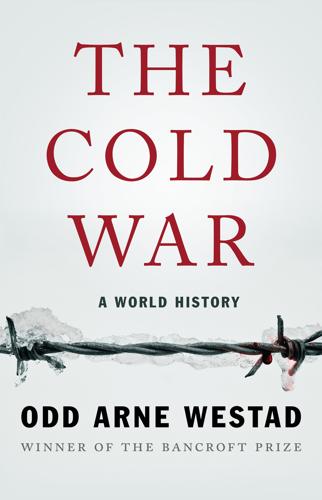
The Cold War: A World History
by
Odd Arne Westad
Published 4 Sep 2017
The relationship between Gorbachev and Honecker soon soured. Gorbachev tired of the East German leader’s constant reminders of the need for the USSR to support the GDR. Honecker also complained about less-than-flattering treatment of the GDR in Soviet papers. When Reagan dared the Soviet leader to end the division of Germany in a 1987 speech at the Brandenburg Gate—“Mr. Gorbachev, tear down this wall”—Gorbachev bristled. He told his advisers that he would not let the Americans set his European policy. But even so, Gorbachev’s closest foreign affairs aide, Anatolii Cherniaev, wrote in his diary, “He feels it in his heart that the problem cannot be removed and that someday the Germans will reunite.”21 What really galled Gorbachev was that East German intransigence prevented him from doing what he considered really important for the Soviet Union, not least economically: to draw closer to West Germany and, through the Germans, to western Europe.
…
Reagan to Gorbachev, 11 March 195, NSA-DA, http://nsarchive.gwu.edu/dc.html?doc=2755702-Document-02. 10. Entry for 10 October 1983, Ronald Reagan, The Reagan Diaries (New York: HarperCollins, 2007), 186. 11. Reagan State of the Union address, 25 January 1984, PPP Reagan 1984, 1:93. 12. Record of conversation, Reagan–Gorbachev, 20 November 1985, Geneva, in Svetlana Savranskaya and Thomas Blanton, eds., The Last Superpower Summits. Gorbachev, Reagan, and Bush. Conversations That Ended the Cold War (Budapest: Central European Press, 2016), 112. 13. Mikhail Gorbachev, Political Report of the CPSU Central Committee to the 27th Party Congress (Moscow: Novosti, 1986), 5, 6. 14.
…
The threat of nuclear war was ever more immediate, especially as both sides were developing new, lighter, and more easily targetable weapons. And there was the rhetoric, which by 1982–83 had reached fever pitch. Reagan spoke of the USSR as “the focus of evil in the modern world.” The Soviets spoke of Reagan as the new Hitler. “Reagan’s vulgar speeches show the true face of the military-industrial complex. They have long sought such a figure. Now, they have finally found it in the form of Reagan,” said Iurii Andropov, who after Brezhnev’s death in 1982 replaced him as Soviet leader.1 The Cold War in the early 1980s was very perilous, probably more so than at any other time since the Cuban missile crisis of 1962.
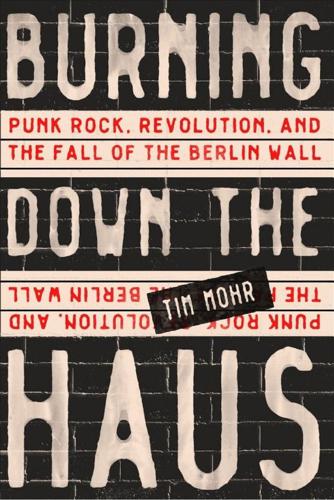
Burning Down the Haus: Punk Rock, Revolution, and the Fall of the Berlin Wall
by
Tim Mohr
Published 10 Sep 2018
Gorbachev’s star had long since eclipsed Reagan’s in both Germanies, and there was little interest in, or West German media coverage of, the speech. The previous week, at nearly the same location as Reagan’s speech, David Bowie, the Eurythmics, and Genesis had headlined open-air shows on three successive nights as part of anniversary celebrations. Each night a couple thousand East Germans had tried to approach the Brandenburg Gate from the east in order to hear the music; for Reagan, they didn’t bother. “Mr. Gorbachev,” Reagan intoned, “tear down this wall,” And nobody on either side of the Berlin Wall gave a fuck. 51 Two days later, organizers of the Church Conference from Below met in Halle for the last major planning session prior to the event.
…
There was Anne Clark’s “Poem for a Nuclear Romance,” the Sisters of Mercy’s “Black Planet,” the Cure’s “A Strange Day”—the list goes on and on. This was the bleak reality of life while Reagan held the nuclear launch codes. On June 11, 1987, despite rain, tens of thousands of protesters took to the streets of West Berlin. Demonstrators torched cars and smashed store windows. Police fought back with tear gas and batons. “Reagan is a murderer and a fascist!” the demonstrators chanted. Feelings for Reagan were no warmer in the East. Kids in the East had also grown up with a genuine sense of fear that the world might actually come to an end during their lifetime.
…
For some, this fueled nihilistic feelings—one reason Toster from die Anderen, for instance, never got deeply political was because he stopped giving a shit. Forget changing the world, let’s have a party. To Toster, the posturing, especially from Reagan, was like a pissing contest—but one that affected the whole world. And while Gorbachev had raised hopes a little, the future still looked dim with the tough-talking Reagan in power in the U.S. On June 12, the day following the protests in West Berlin, Reagan delivered his speech at the Brandenburg Gate, with the Berlin Wall as a backdrop. Police sealed off the entire Western district of Kreuzberg in order to contain protesters they feared would overwhelm the modest audience assembled at the site of the speech.

Gorbachev: His Life and Times
by
William Taubman
CHAPTER 13 1989: TRIUMPH AND TROUBLE ABROAD IN THE LONG RUN, THE FALL of the Berlin Wall was inevitable. How could Germans remain forever separated when they were so attached (occasionally too attached) to their shared nationhood? But when and how the wall fell was not predictable. It did not fall because in the summer of 1987 President Reagan declared, “Mr. Gorbachev, tear down this wall!” Nor because Gorbachev decided on his own to order the East Germans to do so. Rather, the actual fall resembled the theater of the absurd.1 Under pressure from massive opposition demonstrations in early November 1989, the East German Politburo opted for new, temporary travel rules permitting “permanent exit” from the German Democratic Republic.
…
Regan, For the Record: From Wall Street to Washington (San Diego: Harcourt Brace Jovanovich, 1988), 305. 141 Dobrynin, In Confidence, 587. 142 Aleksandrov-Agentov, Ot Kollontai do Gorbacheva, 288; Regan, For the Record, 307. 143 U.S. government film seen at the Ronald Reagan Presidential Library. 144 Dobrynin, In Confidence, 588. 145 Grachev quotes Yakovlev, in Grachev, Gorbachev’s Gamble, 64. 146 Ibid. 147 Reagan Library, Matlock MSS (Box 92137), obtained from the Margaret Thatcher Foundation. 148 Matlock Jr., Reagan and Gorbachev, 162. 149 Regan, For the Record, 310–11. 150 Ronald Reagan, An American Life (New York: Simon & Schuster, 1990), 14. 151 Gorbachev, Zhizn’, 2:21. 152 Chernyaev’s diary, November 24, 1985, entry, in Sovmestnyi iskhod, 657. 153 Dobrynin, In Confidence, 620. 154 Grachev, Gibel’ Sovetskogo “titanika,” 255. 155 Shultz, Turmoil and Triumph, 600–601. 156 On Gorbachev’s hours, see Aleksandrov-Agentov, Ot Kollontai do Gorbacheva, 288. 157 Matlock Jr., Reagan and Gorbachev, 156. 158 Dobrynin, In Confidence, 591. 159 Regan, For the Record, 312–13. 160 Author’s interview with Gorbachev, May 2, 2007, Moscow. 161 Reagan, American Life, 12–15. 162 Regan, For the Record, 315. 163 Ronald Reagan Presidential Library and Museum, “Address at Commencement Exercises at Eureka College, Eureka, Illinois, on May 9, 1982,” Public Papers of President Ronald W. Reagan, May 9, 1982, http://www.reagan.utexas.edu/archives/speeches/1982/50982a.htm. 164 FitzGerald, Way Out There, 54. 165 Nancy Reagan, My Turn: The Memoirs of Nancy Reagan (New York: Random House, 1989), 66. 166 Ibid., 336. 167 Ibid., 44–54, on astrology; Regan, For the Record, 300, on the château. 168 N. Reagan, My Turn, 336–40. 169 Regan, For the Record, 314. 170 R.
…
“I don’t want to do anything dumb,” he told Scowcroft in late January.20 He also had a complicated relationship with Reagan and Reaganism that held him back. Bush wanted to emerge from Reagan’s shadow as his own man, “to put his own fingerprint on the country’s foreign policy,” as Baker later put it. But he also feared right-wing attacks for being more liberal than Reagan, which he could avoid by being tougher on the Russians than Reagan had been. Bush knew from the letter that Kissinger brought back from Moscow that Gorbachev was (in Bush’s words) “ready to pick up immediately from where the Reagan administration had left off,” but instead Bush decreed the “pause.”21 Gorbachev was puzzled, then “offended” (according to Grachev), that “his newly discovered ‘friend George’ was not ready to render him the support he so badly needed,” “afraid” (Chernyaev recalled) that “everything he had achieved with Reagan” might be “lost.”22 He could tolerate a short delay, but weeks and months?
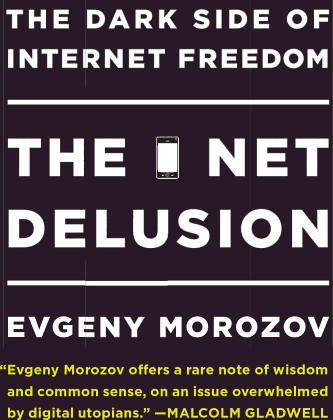
The Net Delusion: The Dark Side of Internet Freedom
by
Evgeny Morozov
Published 16 Nov 2010
Journalists, always keen to sacrifice nuance in the name of supposed clarity, are the worst abusers of Cold War history for the purpose of explaining the imperative to promote Internet freedom to their audience. Roger Cohen, a foreign affairs columnist for the International Herald Tribune, writes that while “Tear down this wall!” was a twentieth-century cry, the proper cry for the twenty-first century is “Tear down this firewall!” Foreign Affairs’ David Feith argues that “just as East Germans diminished Soviet legitimacy by escaping across Checkpoint Charlie, ‘hacktivists’ today do the same by breaching Internet cyber walls.”
…
The person to blame for popularizing such views happens to be the same hero many conservatives widely believe to have won the Cold War itself: Ronald Reagan. Since he was the man in charge of all those Western radio broadcasts and spearheaded the undercover support to samizdat-printing dissidents, any account that links the fall of communism to the role of technology would invariably glorify Reagan’s own role in the process. Reagan, however, did not have to wait for future interpretations. Proclaiming that “breezes of electronic beams blow through the Iron Curtain as if it was lace,” he started the conversation that eventually degenerated into the dreamy world of “virtual curtains” and “cyber-walls.” Once Reagan announced that “information is the oxygen of the modern age” and that “it seeps through the walls topped by barbed wire, it wafts across the electrified borders,” pundits, politicians, and think-tankers knew they had a metaphorical treasure trove while Reagan’s numerous supporters saw this narrative as finally acknowledging their hero’s own gigantic contribution to ushering in democracy into Europe.
…
Once Reagan announced that “information is the oxygen of the modern age” and that “it seeps through the walls topped by barbed wire, it wafts across the electrified borders,” pundits, politicians, and think-tankers knew they had a metaphorical treasure trove while Reagan’s numerous supporters saw this narrative as finally acknowledging their hero’s own gigantic contribution to ushering in democracy into Europe. (China’s microchip manufacturers must have been laughing all the way to the bank when Reagan predicted that “the Goliath of totalitarianism will be brought down by the David of the microchip.”) It just took a few months to add analytical luster to Reagan’s pronouncements and turn it into something of a coherent history. In 1990, the RAND Corporation, a California-based think tank that, perhaps by the sheer virtue of its propitious location, never passes up an opportunity to praise the powers of modern technology, reached a strikingly similar conclusion.
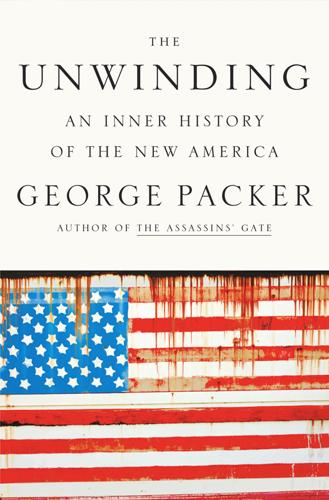
The Unwinding: An Inner History of the New America
by
George Packer
Published 4 Mar 2014
Now young people were protesting on Wall Street because the whole thing was hog-tied, but Dean tried to make the occupiers see the change that was coming, right there in Greensboro. In Tampa, Matt Weidner started blogging about Occupy just a few days after the protesters took the park, and didn’t let up. He compared it to Shays’ Rebellion just after the Revolutionary War, called it “the Tea Party with brains,” and in a post titled “Mr. President—Tear Down This Wall (Street),” he wrote: The Occupy Wall Street movement is just the beginning. Admittedly small, but powerful and frankly quite dangerous. Both to the established order and to the way of life that this country is currently infected by. This current way of life is not sustainable. This country has become a lie.
…
It took Dean six years of bartending to graduate—at one stage his education was interrupted by a five-month trip with his best friend, Chris, to California, where they lived in a VW bus and pursued girls and good times—but in 1989 he finally earned his degree, in political science. Dean was a registered Republican, and Reagan was his idol. To Dean, Reagan was like a soothing grandfather: he had that ability to communicate and inspire people, like when he spoke about “a city upon a hill.” It was something Dean thought he could do as well, since he was a good speaker and came from a family of preachers. When Reagan talked, you trusted him, and he gave you hope that America could be great again. He was the only politician who ever made Dean want to become one himself—an idea that ended the week he was busted for smoking pot on the steps of a campus building and arrested a few days later for driving under the influence.
…
The only one his father would help pay for was Bob Jones University, a Bible school in South Carolina. Bob Jones barred interracial dating and marriage, and in early 1982, a few months after Dean enrolled, the school became national news when the Reagan administration challenged an IRS decision that had denied Bob Jones tax-exempt status. After a storm of criticism, Reagan reversed himself. According to Dean, Bob Jones was the only college in the world where the barbed wire around the campus was turned inward, not outward, like at a prison. The boys had to keep their hair above their ears, and the only way to communicate with the girls on the other side of campus was to write a note and put it in a box that a runner would take from dorm to dorm.

Extreme Money: Masters of the Universe and the Cult of Risk
by
Satyajit Das
Published 14 Oct 2011
Los Cee-Ca-Go Boys For a quarter of a century, the Berlin Wall symbolized the difference between the free markets of the West and the socialist economies of the East. On June 12, 1987, speaking at the Brandenburg Gate to commemorate the 750th anniversary of Berlin, U.S. President Ronald Reagan issued a challenge to Mikhail Gorbachev, the general secretary of the Communist Party of the Soviet Union: “Tear down this wall!” On November 9, 1989, the Berlin Wall came down. At the fall of the Wall, when asked “Who won?”, Western political scientists cited the triumph of capitalism over socialism. The economists’ response was “Chicago.” The University of Chicago radically changed how the world thought about economics, politics, and business, with a system based on: “belief in the efficacy of the free market as a means for organizing resources...skepticism about government intervention into economic affairs and...emphasis on the quantity theory of money as a key factor in producing inflation.”1 In the early part of the twentieth century, work in theoretical physics was centered around the Cavendish Laboratory (Cambridge, England), Göttingen (Germany), and the Institute of Theoretical Physics (Copenhagen, Denmark).
…
Facing a strike by federal air traffic controllers, Reagan, once president of the Screen Actors Guild, declared an emergency and ultimately fired over 11,000 striking controllers, effectively busting the union. In the UK Thatcher and her trusted enforcer Norman Tebbit defeated the National Union of Mineworkers in a bruising, no-holds-barred battle. Reagan and Thatcher took the advice of financier Jay Gould: “hire one half of the working class to kill the other half.” Reagan cut spending, but not sufficiently to offset the reduction in tax revenue. Reagan reduced nonmilitary spending such as food stamps, federal education, and environmental programs.
…
There was the misery index—the sum of inflation and unemployment rates. In a presidential debate, Reagan delivered the killer blow: “Next Tuesday all of you will go to the polls...and make a decision. ...when you make that decision...ask yourself, are you better off than you were four years ago?” Reagan defeated President Carter easily. In the UK, Margaret Hilda Thatcher defeated the ill-fated James Callaghan and a tired Labour government in 1979 to become the first woman prime minister of the UK. Ten years earlier Thatcher had said: “no woman in my time will be Prime Minister.” Thatcher became a close ally of Reagan. An aide observed that when together a crowbar was needed to pry them apart.
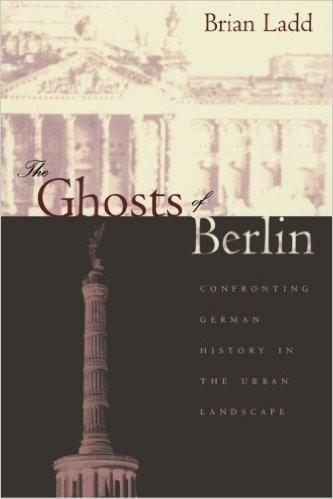
The Ghosts of Berlin: Confronting German History in the Urban Landscape
by
Brian Ladd
Published 1 Jan 1997
Before long, however, West Germany and its allies began to exploit the propaganda value of the Wall as a symbol of Communism's failure. 11 By the time of Kennedy's triumphal visit in June of 1963, a pilgrimage to the safely fortified forward post had become a favorite photo opportunity. Every state visitor in Bonn was if possible brought to Berlin to view the infamous Wall. President Ronald Reagan's visit in 1987, for example, sounded the metaphor of mobility and connectedness. He stood before the walled-off Brandenburg Gate and demanded, "Mr. Gorbachev, open this gate. Mr. Gorbachev, tear down this wall." The East could respond in kind: it declared the statements of Western politicians at the Wall to be a provocation showing the necessity and the efficacy of the border fortifications, which they, too, proudly displayed to guestsat least to carefully selected ones.
…
Kohl's way of honoring victims had already created a furor eight years before, when he persuaded President Ronald Reagan to accompany him to a German military cemetery in the town of Bitburg. The graves he asked Reagan to honor were of soldiers who had fought against U.S. troops in World War II; a few were members of the Waffen-SS. The Bitburg visit became a publicrelations disaster for Reagan, since he refused to embarrass Kohl by canceling it, despite protests from American war veterans and from Jewish groups. Under American pressure, however, the day's itinerary for May 5, 1985, was expanded to include a visit to the Bergen-Belsen concentration camp. Through their remembrance, Kohl and Reagan linked, and effectively equated, two groups of victims: concentration camp prisoners and German soldiers.
…
A brochure prepared for the Fort Lee auction described the segments of Wall as the perfect way to "decorate the entrance hall of your corporate headquarters, museum, or estate." 4 Some pieces were re-erected as works of artor were they just souvenirs? Others stood as victory monuments or Cold War booty, such as the piece ("hated symbol of, yes, an evil empire") proudly unveiled by former president Ronald Reagan at the dedication of his presidential library.5 It was difficult enough to define the meaning of Wall fragments removed to sites where they stood alone. The idea of leaving pieces on their original site made no sense at all to most Berliners. Proposals to preserve parts of the Wall, and to create a Wall memorial in Berlin, faced organized and unorganized opposition.
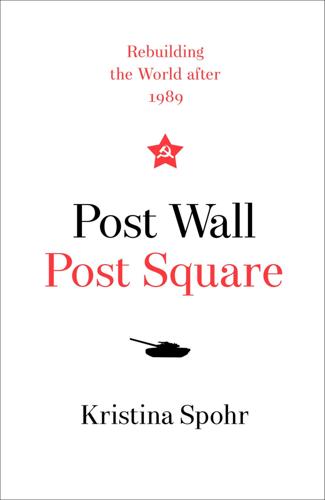
Post Wall: Rebuilding the World After 1989
by
Kristina Spohr
Published 23 Sep 2019
And our responsibility is to look ahead and grasp the promise of the future … For forty years, the seeds of democracy in Eastern Europe lay dormant, buried under the frozen tundra of the Cold War … But the passion for freedom cannot be denied forever. The world has waited long enough. The time is right. Let Europe be whole and free … Let Berlin be next – let Berlin be next!’[116] Two years before, Bush’s predecessor Ronald Reagan had stood before the Brandenburg Gate and called on the Soviet leader, ‘Mr Gorbachev, tear down this wall.’[117] Now in June 1989 a new US president was throwing down the gauntlet once again, mounting a new propaganda offensive against the charismatic Soviet leader. ‘Let Berlin be next’ was in one way headline-grabbing rhetoric, but it revealed that the administration was already beginning to grapple with the issue of German unification.
…
Geir Lundestad ‘“Imperial Overstretch”, Mikhail Gorbachev and the End of the Cold War’ CWH 1, 1 (2000) pp. 1–20; Arne Westad The Global Cold War p. 379 Back to text 10. Reagan’s Remarks at the Annual Convention of the National Association of Evangelicals in Orlando Florida 8.3.1983 The American Presidency Project website (hereafter APP); Reagan’s Address to Members of the UK Parliament 8.6.1982 APP Back to text 11. Reagan’s Address to the Nation on Defense and National Security 23.3.1983 APP Back to text 12. On the superpower summits, see for example Jack F. Matlock Jr Reagan and Gorbachev: How the Cold War Ended Random House 2004; James Graham Wilson The Triumph of Improvisation: Gorbachev’s Adaptability, Reagan’s Engagament, and the End of the Cold War Cornell UP 2014; Svetlana Savranskaya & Thomas Blanton (eds) The Last Superpower Summits: Gorbachev, Reagan and Bush – Conversations that Ended the Cold War CEU Press 2016 (hereafter TLSS); Jonathan Hunt & David Reynolds ‘Geneva, Reykjavik, Washington, and Moscow, 1985–1991’ in Kristina Spohr & David Reynolds (eds) Transcending the Cold War: Summits, Statecraft and the Dissolution of Bipolarity in Europe, 1970–1990 Oxford UP 2016 pp. 151–79.
…
Gorbachev launched into a passionate speech in favour of nuclear abolition and ‘a nuclear-free Europe’ – which Thatcher totally rejected – and he vented his frustrations with Bush for not responding more positively to his disarmament initiatives. The prime minister, playing her preferred role as elder stateswoman, was at pains to reassure him: ‘Bush is a very different person from Reagan. Reagan was an idealist who firmly defended his convictions … Bush is a more balanced person, he gives more attention to detail than Reagan did. But as a whole, he will continue the Reagan line, including on Soviet–American relations. He will strive to achieve agreements that are in our common interest.’ Gorbachev jumped on those last words: ‘That is the question – in our common interests or in your Western interests?’
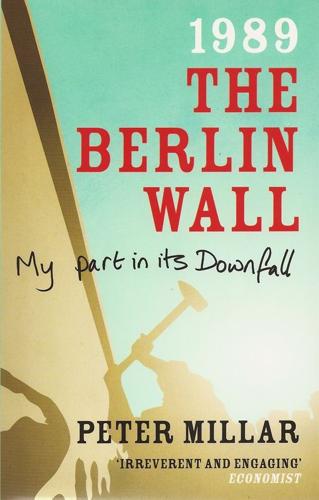
1989 The Berlin Wall: My Part in Its Downfall
by
Peter Millar
Published 1 Oct 2009
Only a week later US President Ronald Reagan visited West Berlin and delivered a challenge to the Soviet leader that would, more than two years later, seem like a prophetic demand: ‘General Secretary Gorbachev, if you seek peace, if you seek prosperity for the Soviet Union and Eastern Europe, if you seek liberalisation, come here to this gate. Mr Gorbachev, open this gate. Mr Gorbachev, tear down this wall!’ Reagan’s speech has since been hailed as a decisive factor, if only because Gorbachev’s actions – or rather inaction – were key to the events of 1989. At the time, it just seemed Reagan was trying to compete with the ghost of John F.
…
He returned home to become head of the KGB and had been a leading light in advocating the brutal suppression of the 1968 Prague Spring. His promotion to the top job was greeted with despair in a Poland still labouring under martial law. Washington saw him as a fittingly sinister head for what President Ronald Reagan now termed the ‘evil empire’. A few months later, in September 1983, we reached one of those bleak moments when the awful reality of the superpower standoff came home. Soviet fighter pilots shot down a South Korean airliner which had – allegedly because of a navigational error – strayed into prohibited airspace over the Kamchatka peninsula, home to some of Moscow’s missiles sites.
…
Lev had previously been foreign minister Andrei Gromyko’s personal snapper, he boasted. Which made me realise I was now also just ‘two handshakes’ away from Josef Stalin. As links to twentieth-century tyrants went, I had done the double! Back on the Cold War front, a memorable Time magazine cover named Reagan and Andropov jointly ‘Men of the Year’, showing them standing back to back, like adversaries about to take part in a deadly duel. The American television correspondents meanwhile were engaged in a battle of their own: trying to get their domestic anchors to pronounce the new Soviet leader’s relatively simple name properly.
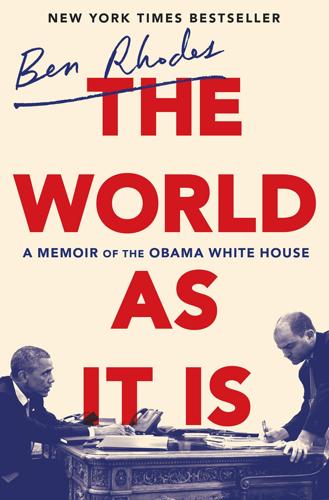
The World as It Is: A Memoir of the Obama White House
by
Ben Rhodes
Published 4 Jun 2018
I would be responsible for the words he spoke in public, and the Berlin speech was the center of my existence for a couple of weeks. As a thirty-year-old who had never written a speech delivered outside the United States, this was like being asked to ride your first race as a jockey on the favorite horse at the Kentucky Derby. It was, after all, Berlin. Kennedy: Ich bin ein Berliner! Reagan: Tear down this wall! The two most iconic speeches delivered by American presidents abroad both took place in Berlin. I read each of them dozens of times. I’d listen to recordings of them in my apartment late at night. I wanted, more than anything else, to help put Barack Obama in that continuum, to write words that someone like me might someday read.
…
“I don’t know,” I said to Obama, “but they’re not going to be paying for your presidential library.” CHAPTER 10 LIBYA One of my earliest memories of American foreign policy is of Ronald Reagan sitting behind the desk in the Oval Office and explaining, in his grandfatherly way, that we were bombing Libya. I was eight years old. My father loved Reagan, so to me he could do no wrong. If Reagan said we had to teach Gaddafi a lesson for sponsoring terrorist attacks, then surely he was right. Gaddafi was a villain, and our president was a hero who rode horses with the queen of England. I never imagined that Gaddafi would be at the center of events that would shape the Obama presidency and my own role in it.
…
The one person who didn’t seem enthusiastic about giving a speech in Berlin was Obama. When Favreau and I talked to him about it, he didn’t offer much beyond suggesting we use Berlin’s story to talk about what we were proposing in our own foreign policy. Chancellor Angela Merkel rejected a request from the campaign for the speech to take place at the Brandenburg Gate, where Reagan had called on Gorbachev to tear down the wall, saying that the venue should be reserved for an actual president. When he learned about this, Obama was embarrassed and annoyed. “I never said I wanted to give a speech in front of the Brandenburg Gate,” he snapped. It spoke to a larger dynamic in the campaign: While Obama was often blamed for the cult of personality growing up around him—arty posters, celebrity anthems, and lavish settings for his events—he was rarely responsible for it, and worried that we were raising expectations too high in a world that has a way of resisting change.
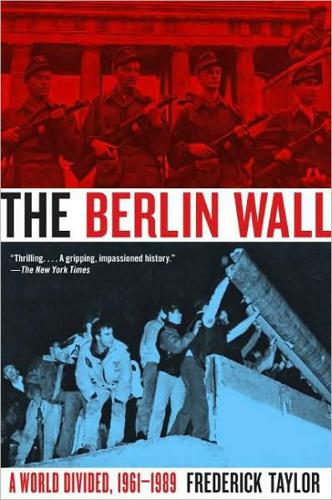
The Berlin Wall: A World Divided, 1961-1989
by
Frederick Taylor
Published 26 May 2008
The only major political figure to challenge this increasingly relaxed attitude towards the Wall was the same man who, in 1978, had attracted 396 / THE BERLIN WALL the attention of the Stasi observers at Checkpoint Charlie: Ronald Reagan. Now more than half-way through his second term as president of the United States, the 76-year-old had lost none of his fierce and occasionally undiplomatic anti-Communist drive. In June 1987 he arrived in West Berlin to join the city’s 750th-anniversary celebrations. ‘General Secretary Gorbachev,’ Reagan thundered in front of the Brandenburg Gate, ‘if you seek peace-if you seek prosperity for the Soviet Union and Eastern Europe-if you seek liberalisation, come here to this gate, Mr Gorbachev, open this gate. Mr Gorbachev, tear down this wall.’ All the same, three months later, Erich Honecker was received with honours in West Germany.
…
However, about four hours later they returned in a black Plymouth sedan with US Mission licence plates. An army sergeant drove them through the checkpoint and into East Berlin. Only when they presented their passports were the couple in the back of the Plymouth identified as two Americans, a man of sixty-seven and a woman ten years younger. Their names were Ronald and Nancy Reagan. The Reagans took an hour’s drive around East Berlin, like any tourists, and then returned to the West. The East German authorities had for the ENDGAME / 381 first time laid eyes on the man who, many say, would prove to be the nemesis of their regime and all it represented. However, the Stasi observers do not, at that point, even seem to have realised who the man and his wife were.1 This would change very soon.
…
The Stasi could keep the dissident movement divided, and it could decapitate its leadership, but the exit-visa movement was something else, something close to a force of nature—a monster that the ENDGAME / 385 Helsinki agreement had summoned from the depths of the East German people’s unconsciousness. And just a little more than two years after the Stasi had spotted him and his wife posing for the cameras in front of Checkpoint Charlie, on 20 January 1981 Ronald Wilson Reagan was sworn in as fortieth president of the United States. President Reagan’s incoming Republican administration offered little direct threat to the East German regime as such. What it did represent was a kind of ruthless counter-revolutionary conviction that shocked and shook the Communist world. Backing the right-wing Contras against Marxist Sandanistas in Central America and the mujahidin against the Soviets and their client regime in Afghanistan, the Americans dared to mimic the kind of support for ‘national liberation’ movements that the Soviets had aggressively promoted since the 1950s.
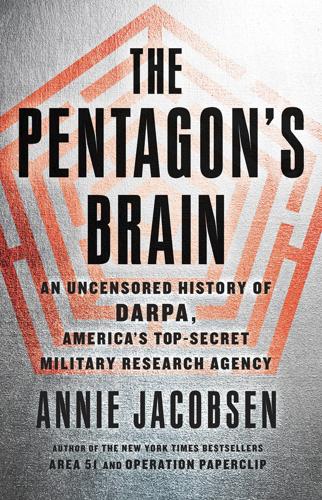
The Pentagon's Brain: An Uncensored History of DARPA, America's Top-Secret Military Research Agency
by
Annie Jacobsen
Published 14 Sep 2015
For decades scientists have been trying to create artificially intelligent machines, without success. AI scientists keep hitting the same wall. To date, computers can only obey commands, following rules set forth by software algorithms. I wondered if the transhumanism programs that Michael Goldblatt pioneered at DARPA would allow the agency to tear down this wall. Were DARPA’s brain-computer interface programs the missing link? Goldblatt chuckled. He’d left DARPA a decade ago, he said. He could discuss only unclassified programs. But he pointed me in a revelatory direction. This came up when we were discussing the Jason scientists and a report they published in 2008.
…
And Jack Thorpe had more than a decade of work ahead of him. CHAPTER FIFTEEN Star Wars and Tank Wars On the evening of March 23, 1983, a long black limousine pulled up to the south gate of Ronald Reagan’s White House. In the back sat Edward Teller, now seventy-five years old. Teller was not exactly sure why he was here. He had just flown in from California, where he lived, because the aide who called him three days earlier said President Reagan thought it was important that he be at the White House on this night. Walking with a limp and a cane, Teller made his way through the White House foyer, up the stairs, and into the Blue Room.
…
Townes, the principal inventor of the laser. At 8:00 p.m., in a nationally televised address, President Reagan announced to the world his decision to launch a major new research and development program to intercept Soviet ICBMs in various stages of flight. The program, the Strategic Defense Initiative (SDI), would require numerous advanced technology systems, the majority of which were still in the development stage. DARPA would be the lead agency in charge until SDI had its own organization. President Reagan said that the reason for this radical new initiative was simple. When he first became president, he was shocked to learn that in the event of a Soviet nuclear strike, his only option as commander in chief was to launch an all-out nuclear attack against the Soviets in response.
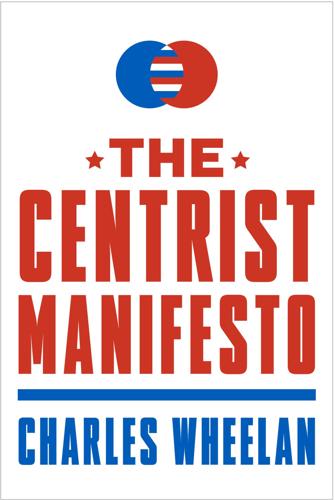
The Centrist Manifesto
by
Charles Wheelan
Published 18 Apr 2013
That is the beauty of a system with relatively powerful state and local governments. The Republicans have historically been strong on national defense, which is inarguably a core responsibility of the federal government. (It is hard to imagine Jimmy Carter, rather than Ronald Reagan, standing in West Berlin and declaring, “Mr. Gorbachev, tear down this wall!”) More recently, the same logic has been applied to antiterrorism efforts. No individual can protect against a terrorist attack or prevent a North Korean missile launch. Government is the mechanism by which we collectively protect ourselves against these kinds of potentially devastating threats.
…
Government cannot possibly protect us from ourselves in situations where we should know better. Government should not be responsible for supporting people who are capable of supporting themselves; people who can work should work. The notion of welfare queens driving Cadillacs has often been overstated and exploited. (Ronald Reagan’s original anecdote to this effect appears to have been woven from whole cloth.) Still, anyone looking to redistribute income in the United States should appreciate a core element of the American psyche: no hardworking person likes to pay taxes to support people whom they perceive to be taking advantage of the system.
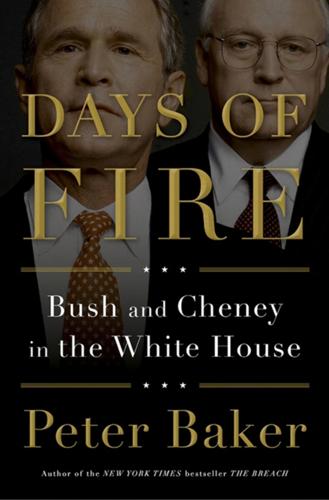
Days of Fire: Bush and Cheney in the White House
by
Peter Baker
Published 21 Oct 2013
The speech bothered Ari Fleischer, who worried it might sound unsophisticated. In the car back to the White House, Fleischer advised Bush to go easy on the word “evil,” suggesting it was too simple. “If this isn’t good versus evil, what is?” Bush countered. He reminded Fleischer that Ronald Reagan had not gone to Berlin to say “put a gate in this wall” or “take down a few bricks.” He said “tear down this wall,” all of it. Sometimes simple was best. Bush was getting second-guessed at every turn. Not much later, Hughes broached his use of the word “folks” to describe the attackers. “Mr. President, I’m not sure you ought to be calling the terrorists ‘folks.’
…
Cheney had friendships with reporters, although he disdained the conservative columnists Rowland Evans and Robert Novak, whom he dubbed “Errors and No Facts.” He oversaw the campaign, leaning on a crafty Texas operative named James A. Baker III to wage a delegate-by-delegate battle staving off Reagan. Cheney, more in tune politically with the challenger, made a secret trip to Camp David in August 1976 to convince Ford to put Reagan on the ticket. But the scars of their primary contest were too deep. The battle went all the way to the convention, where Reagan forces extracted one last concession, a “morality in foreign policy” plank in the platform denouncing agreements with the Soviet Union—in effect, denouncing Ford’s own policies.
…
Pete Williams, then a young reporter covering the campaign, thought, “This guy doesn’t give a speech; he briefs the audience.” Looming over both races was Ronald Reagan. Bush’s primary opponent had worked for Reagan, who in turn sent a letter supporting him for the Texas seat, a move that might have been rooted in loyalty but also reflected the chess match then under way for the 1980 presidential nomination with Bush’s father. Cheney, for his part, had to live down his work in the 1976 primaries against Reagan, who carried the Wyoming delegation at the convention. Reluctant to “run as Jerry Ford’s guy in Wyoming,” Cheney asked his former boss not to endorse him.
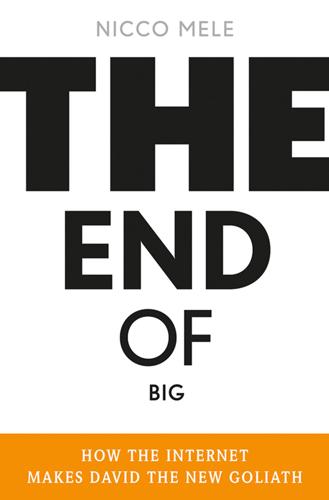
The End of Big: How the Internet Makes David the New Goliath
by
Nicco Mele
Published 14 Apr 2013
The names of two respected newspaper journalists—Bob Woodward and Carl Bernstein—likewise became indelibly linked to the Watergate scandal. Network television footage of crowds at the Berlin Wall in the darkness of November 9, 1989, provided unforgettable, collective images of the end of the Cold War, echoing President Reagan’s powerful rhetoric a few years earlier: “Mr. Gorbachev, tear down this wall!” And burned into the consciousness of many Americans following September 11, 2001, is the television footage of the airplanes plunging into the Twin Towers, not to mention the figure of Mayor Rudy Giuliani, standing at the podium answering questions at press conference after press conference with a mixture of calm, grief, and determination.
…
It’s a legitimate question, and a brief historical example from the Democratic side suggests why. As the 1984 presidential election season got under way, Democrats were in trouble. The front-runner for their party’s nomination, Walter Mondale, didn’t stir up much excitement, and he faced an enormously popular incumbent Republican president—Ronald Reagan—who was also an incredible communicator and former movie star. Mondale represented the consummate Democratic insider. A former U.S. senator and vice president under Jimmy Carter, he had spent much of his public life preparing to run for president, working his way up the Democratic Party food chain.
…
Conventional wisdom judged him unbeatable in the primaries because he had locked up the Democratic Party’s fund-raising machinery and most of the critical endorsements, leaving his competitors out in the cold. Still, he remained an uninspiring figure widely regarded as unable to mount a credible challenge to Reagan. Mondale easily won the Iowa caucus. But then, to everyone’s shock, he lost the New Hampshire primary to the charismatic and handsome Gary Hart, a young upstart U.S. senator from the American West. Now Democrats who had resigned themselves to Mondale as the nominee got excited. They began sending money to Hart in hopes he might defeat Mondale.

Roller-Coaster: Europe, 1950-2017
by
Ian Kershaw
Published 29 Aug 2018
Hope of lasting improvement in relations between the West and the Soviet Union had grown markedly by that time. Hardly any Western European leader, however, even then could anticipate the speed of developments over the coming year, or believe that by the end of 1989 the Berlin Wall – symbol of the Cold War – would have come down. When President Reagan, standing in front of the Brandenburg Gate in West Berlin on 12 June 1987, demanded ‘Mr Gorbachev, tear down this wall!’, the sentiment was applauded but the demand itself seemed no more than a rhetorical flourish. The Wall appeared destined to last into the indefinite future and indeed, ran some arguments, it remained a welcome source of stability, permanently putting the ‘German Question’ on hold.
…
Mrs Thatcher visibly relaxed at the joke and later, picking up the words of one of her advisers, remarked: ‘I like Mr Gorbachev. We can do business together.’ Gorbachev and Reagan also established a good personal rapport when they met in Geneva in November 1985. At a second summit, in Reykjavik in Iceland, on 11–12 October 1986, Gorbachev took Reagan completely by surprise in proposing a 50 per cent reduction in strategic nuclear arsenals on both sides, then, when the Americans hesitated, suggesting the complete elimination of intermediate-range missiles in Europe. The proposal foundered when Reagan refused to contemplate restrictions on testing for the Strategic Defence Initiative.
…
For the next five years superpower relations worsened. The new American President, Ronald Reagan, a former B-movie actor whose folksy manner combined with firm conservative principles proved a winning formula in the election of 1980 after the widely viewed failure of the Carter presidency, set the tone. He was avidly backed by his most assertive ally, Margaret Thatcher. Part of restoring prestige after the Vietnam debacle was to demonstrate American strength through a readiness to confront the Soviet Union, which by 1983 Reagan was describing as ‘an evil empire’. The nuclear arms race escalated that year. The first Pershing missiles were stationed in Western Europe in November.
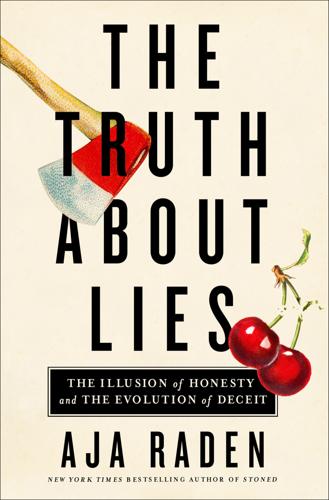
The Truth About Lies: The Illusion of Honesty and the Evolution of Deceit
by
Aja Raden
Published 10 May 2021
To make matters worse, those same major American newspapers had been relentlessly demanding access to the Chinese market for years, insisting on the need to “tear down the wall of Chinese tariffs and protectionism.” (In fact, they still do; as recently as 2012 Forbes ran an article titled “Tear Down This Wall—The Chinese Tariff Wall.”17) The preexisting conditions for disaster were already boiling, but when the news reached China that the Great Wall was going to be torn down by Americans as an invitation to foreign trade, it certainly can’t have helped. It’s very possible that these two separate news stories—that the Great Wall would be torn down by Americans seeking trade with China and that Americans demanded the wall of Chinese tariffs and protectionism be torn down to facilitate trade—one literal and threatening, the other metaphoric and merely entitled, were conflated and confused by the time they reached the Chinese, who were already more than a little angry over numerous foreign encroachments and aggressions.
…
Brad Schwartz, “The Infamous ‘War of the Worlds’ Radio Broadcast Was a Magnificent Fluke,” Smithsonian Magazine, May 6, 2015. 7. Ibid. 8. Ibid. 9. Sifakis, Hoaxes, 172. 10. Ibid. 11. Ibid., 173–74. 12. Ibid., 174. 13. Ibid. 14. Ibid., 110. 15. Ibid. 16. Ibid. 17. Baizhu Chen, “Tear Down This Wall—The Chinese Tariff Wall,” Forbes, July 12, 2012. 18. Sifakis, Hoaxes, 110. 19. Ibid. 20. H. L. Mencken, “A Neglected Anniversary,” ETC: A Review of General Semantics 58, no. 4 (2001): 420–24. 21. Ibid. 22. Ibid. 23. Mencken, Henry L., “Melancholy Reflections,” Chicago Tribune, May 23, 1926. 24.
…
Public opinion in the United States was strongly against starting a war in Nicaragua, but the Sandinistas’ enemies, the counter-revolutionaries, or Contras for short, were happy to do the ground fighting. This is where covert war comes in handy. Because, for reasons that passeth understanding (mine anyway), the newly elected U.S. president, Ronald Reagan, had big heart-shaped eyes for the Contras, likening them to America’s founding fathers. So instead of sending troops to fight the Sandinistas in South America, we sent money. Lots of money. In 1980 the Reagan administration quietly authorized the CIA to “assist” the Contras with funds, weapons, and training. Where did they get this money? Certainly not from Congress—because the whole affair was super illegal.
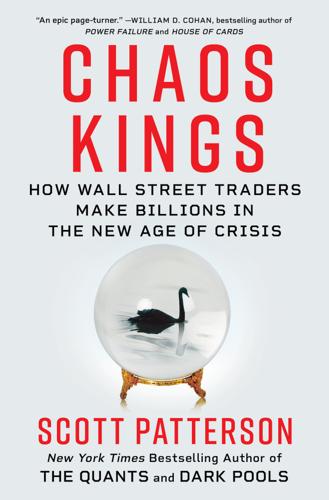
Chaos Kings: How Wall Street Traders Make Billions in the New Age of Crisis
by
Scott Patterson
Published 5 Jun 2023
CHAPTER 4 THE SIZZLER A riot of noise greeted Mark Spitznagel as he stepped into the visitors’ gallery of the Chicago Board of Trade’s cavernous Grain Room. It was the summer of 1987. The market was on a roll, and so was America. The Dow industrials closed above two thousand points for the first time. In Berlin, Ronald Reagan exhorted Mikhail Gorbachev to tear down this wall. Michael Jackson released Bad. Prozac was approved by the FDA. Inside the Board of Trade, the adrenaline-soaked machinery of naked capitalism was hard at work. Spitznagel’s teenage eyes widened at the sights before him. Shouting hordes of traders—sardined into the open-outcry floor, many outfitted in brightly colored jackets—made wild indecipherable gestures.
…
A walled-and-gated French-style villa, it was surrounded by a moat and had a guesthouse, swimming pool, stream, and a garden with an arbor. One room the size of a New York studio apartment had been dedicated solely to storing J. Lo’s shoes. The mansion stood a block away from a former home of Spitznagel’s boyhood idol Ronald Reagan. Nancy Reagan still lived there, and he fantasized about strolling up to her home and knocking on the door. Other fund managers, wanting their own J. Lo mansions and moats, did the math—and opened up copycat operations. “A growing number of money managers and financial firms are rolling out investment products designed to exploit big declines known as ‘black swan’ events,” an August 2010 Wall Street Journal article said.
…
The middleman who sold you the contract—the local—could benefit if prices fell below that twenty-buck bushel. He could also benefit just by trading around moving prices, trying to buy low and sell high. T-bond futures were essentially the same thing, for bonds. Trading in the contracts had surged in the 1980s as the Reagan administration funded an economic boom by issuing billions in Treasurys. Futures contracts helped big institutions buying the bonds to protect themselves against losses—a trade known as a “hedge.” In the exchange’s legendary pits, memorialized in the 1903 Frank Norris novel The Pit, Spitznagel suddenly found himself working side by side with some of the biggest traders in Chicago.
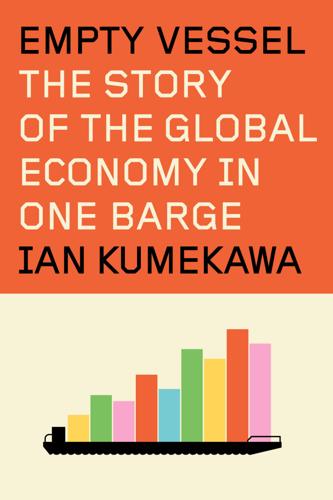
Empty Vessel: The Story of the Global Economy in One Barge
by
Ian Kumekawa
Published 6 May 2025
In 1986, it took over the Spanish automaker SEAT, and in 1988, it closed its one assembly plant in the United States.[23] VW also looked east. By the late 1980s, the Cold War was thawing. In June 1987, Ronald Reagan, addressing a crowd in front of both Berlin’s Brandenburg Gate and the concrete wall dividing the city in two, famously called on Soviet Premier Mikhail Gorbachev to “tear down this wall.” Immediately after the fall of the wall two years later, VW worked to take over facilities in the former East Germany, working with factories in Chemnitz and Eisenach, and buying out Škoda, the communist state–owned Czech carmaker, in 1991.[24] The logic of offshoring that had motivated the Bibby Line to reflag its ships in Hong Kong and the Bahamas similarly motivated VW to move production abroad.
…
The legislation, which inspired similar laws in other states, set the stage for an escalating regime of broken-windows policing, arrests, and imprisonment.[11] These trends intensified under the Reagan administration’s war on drugs, itself pitched as a moral battle for American values, fought on the streets of American cities with surplus military equipment. As the global economy slowed after the thirty-year postwar boom and old industries like ship handling fell away, guns replaced butter. When Reagan slashed social welfare programs in the name of individual responsibility and small government, he oversaw a major expansion of federal funding for law enforcement.
…
Built to service the global, multinational energy industry, it was deployed in the South Atlantic as part of an effort to shift British political attention away from the widespread unemployment caused by Margaret Thatcher’s government. Later, it was rushed to New York to accommodate a swelling jail population, itself precipitated by the rising unemployment and shrinking social services of the Reagan years. All the while, the Vessel was privately owned, successively registered in tax haven after tax haven. The barge has been an abstract financial object; its ownership was divided up and leveraged, used to guarantee international corporate bonds. It has also been an abstract legal object: haggled over in arbitration tribunals in London and the British Virgin Islands and the subject of an important case in English commercial law.
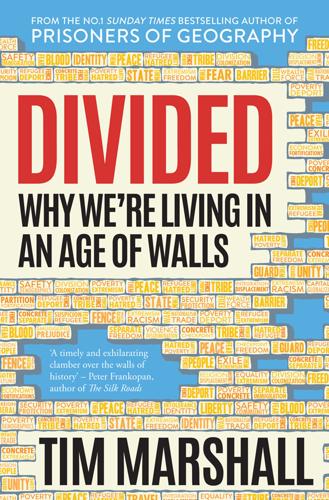
Divided: Why We're Living in an Age of Walls
by
Tim Marshall
Published 8 Mar 2018
Thirty years ago a wall came down, ushering in what looked like a new era of openness and internationalism. In 1987 President Ronald Reagan went to the Brandenburg Gate in divided Berlin and called out to his opposite number in the Soviet Union, ‘Mr Gorbachev – tear down this wall!’ Two years later it fell. Berlin, Germany and then Europe were united once more. They were heady times in which some intellectuals predicted an end of history. However, history does not end. In recent years, the cry ‘Tear down this wall’ is losing the argument against ‘fortress mentality’. It is struggling to be heard, unable to compete with the frightening heights of mass migration, the backlash against globalization, the resurgence of nationalism, the collapse of Communism and the 9/11 attacks and their aftermath.
…
The issue was already in the national consciousness, but this incident helped to raise public awareness further – and it’s been rising ever since. The fence-building continued, albeit with less celebration of finger- and toe-severing, but levels of immigration did not noticeably decrease. In 1986 President Ronald Reagan did a deal: around 3 million unauthorized immigrants who had been living in the USA since before 1982 were given ‘amnesty’. In return, Congress approved more stringent regulations to prevent companies from hiring illegal immigrants, as well as tightened border security. Over the following years, additional barriers were built, but on a limited budget and on occasion using leftover materials from the Vietnam War, such as metal sheets known as perforated steel planking, which had been used as temporary aircraft landing strips.
…
R. 148 Nation of Islam 64–5 nation states in Africa, colonialist creation of 157, 159, 161–3, 166–7, 177 National Front, French 205, 207, 211 National Rifle Association (NRA), US 53 nationalism 6, 193, 196–7, 206–11 Native American tribes 44, 54 Ndadaye, Melchior 166 Nepal 140, 144 Netherlands 207, 211 New Scientist 160 Nigeria 161–2, 164–6, 167–8, 169, 171–2, 174 Nkrumah, Kwame 151, 169 Nordic Union 196 North American Free Trade Agreement (NAFTA) 50, 53–4 North Atlantic Treaty Organization (NATO) 53 Northern Border Project, Saudi Arabia 107 Northern Ireland 226–9, 230, 237 Norway 200 Nowrasteh, Alex 51 Nusra Front 79 Nyerere, Julius 170 O Obama, Barack 48–9, 53, 65–6 Official Irish Republican Army (OIRA) 227 Orbán, Viktor 199, 211 Orwell, George 240–1 Ottoman Empire 106 Outer Space Treaty 248–9 P Pakistan 125–7, 130, 132 Afghanistan border 143–4 Indian border 2, 140–3, 145 Iran border 144 Palestine border tunnels 89–90 Christian population 89 disillusionment with leadership 90–1 Egyptian border 89–90 Gaza 74, 87–90, 245–6 Hamas and Fatah 87–9, 91 Middle Eastern discrimination against 91–2 national identity 197 New Charter (2017) 88 West Bank 1, 6, 71–3, 74, 76–7, 90 see also Israel and Palestine Palestine Liberation Organization (PLO) 72 Palestinian Authority (PA) 87, 91 Paraguay 248 Party for Freedom, Dutch 211 Pashtuns 143–4 Patriotic Europeans Against the Islamization of the West (PEGIDA) 209–10 Pearce, Fred 160 People’s Daily newspaper 23 perestroika 188 Persian Safavid dynasty 106 see also Iran Peru 174 Picts 220 Pinto, Lourenco 161 Poland 194, 205, 212, 235 Polisario Front (PF) 155, 156, 167 Portuguese explorers 160–1 Prohibition (1920–33) 46 Protestants and Catholics, Northern Irish 226–9 Provincial Houses of Traditional Leaders 168 Provisional Irish Republican Army (PIRA) 227 Q Qin dynasty 16 Qin Shi Huang 16, 33 Quesada, Vicente Fox 55 Question Time 231 R Reagan, Ronald 1, 47 refugees 50–1 entering Europe 198–9, 202, 208 Syrian 106, 110 see also immigration religious persecution 6, 128, 131–2, 135, 136–7 see also Islam; Israel and Palestine Republic of Biafra 166 right-wing parties, extreme 64, 203, 206–7, 209, 250 Road to Somewhere (D. Goodhart) 232–3 Robert the Bruce 222 Robinson, Henry 227, 228 Robinson, Peter 228 Rohingya people 136–7 Roman Empire 217–20 Rozoff, James 213 Russia 2, 198, 200 Rwanda 166 S Sadat, Anwar 117 Safavid dynasty 106 Sahrawi Arab Democratic Republic 155–6, 177 Salman, Crown Prince Mohammed bin 113–14 San Bernardino terrorist attacks 51 Saudi Arabia 6, 42, 104, 105, 115, 116 building barriers 42, 106, 107–8, 246 internal divisions 108–9 reforms initiated by royal family 113–14 Scandinavia 196 Schabowski, Günter 189 Scioli, Mike 48 Scotland 196–7, 219, 220 Gaelic language 223 independence referendum (2014) 223–4 relationship with England 222–4, 225–6, 229–30 Scottish parliament 223–4 Scotland Act (1998) 223 Scotland Act (2016) 224 Scottish National Party (SNP) 224 Second Intifada 74 Second Temple, Israel 82–3 Second World War 46, 250 Senegal 165 Sephardi Jews 80, 83 Serbia 2, 199 Shia Islam 4, 5, 6, 102–3, 104–6, 108, 109, 115, 116, 144 Shudras 146 Siachen Glacier 143 Silk Route 14 Singh, Maharaja Hari 141 Single European Act (1986) 194 Six-Day War 64 slavery 45, 59–60 Slovenia 2, 200 smartphones in China 30 Smith, Nathan 246–7 smuggling across borders 46, 51–2, 89–90 social media 4, 28, 29, 30, 51 Social Mobility and Child Poverty Commission, UK 231 Socialist Unity Party, East Germany 184–5 South Africa 168, 171–2, 173 South Sudan 165 Soviet Union 1, 184, 194 space, ownership of outer 248–9 space race 185 Spain 43–4, 156, 167, 197, 198–9 Sri Lanka 126 Stasi 188 Strelczyk, Hans 186 Sungbo’s Eredo 162 Sunni Islam 4, 5, 6, 102, 103, 104–6, 107–8, 109, 113, 115, 116, 144 Sweden 2, 200, 204, 207, 235 Switzerland 202 Syria 42, 79, 92, 101, 105, 106–7, 110, 111, 116 Syrian–Israel border wall 78–9 T Taliban 143–4 Tanganyika 170 Tanzania 170 terrorism Bango Bhoomi theory 132–3 in Europe 200, 201, 205 in the Middle East 99–101, 103–4 radical Islam 18, 51, 79, 101, 104, 105, 107, 114, 115, 128, 137 Uighur people of China 18 United States of America 50–1 see also Hamas; Islamic State (IS) Texas 43–5, 52 Texas–Mexico Automotive SuperCluster Region 52 Tibet 17, 19, 29, 126 Tohono O’odham nation 54 ‘Tortilla Curtain’ 47 trade and industry China 18, 20–1, 30–1, 33 United States of America 52–3 Treaty of Guadalupe Hidalgo (1848) 43, 45 tribalism, African 6, 157–8 Tripathi, Sanjeev 131 True Story of Ah Q (Lu Xun) 22 Trump, Donald 3, 6, 39–41, 43, 50, 51, 52–7, 61, 64, 93, 210 see also United States of America Tunisia 101, 106 Turkey 106, 110, 111, 199, 208, 244 Tutsis 166 2001: A Space Odyssey (film) 3 U Uighur people 17–18, 29 Ukrainian–Russian conflict 198 UNICEF 104 Unionists and Nationalists see Northern Ireland United Kingdom ‘Anywheres and Somewheres’ 232–3 Brexit 6, 196, 222, 226, 229, 231, 232 class division 231–3 colonialism and colonial guilt 161–2, 163, 240–1 Cornish nationalists 225 education 231 Hadrian’s Wall 217–18, 219, 220–1 immigration 234–6 multiculturalism and integration 238–40 Muslim population 204, 237–9 Northern Irish Protestants and Catholics 226–8 relations between England and Northern Ireland 226–7, 229, 231 relations between England and Scotland 222–4, 225–6, 229, 231 relations between England and Wales 224–5 religion 226–8, 236–9 Roman invasion 217–20 United Kingdom Independence Party (UKIP) 196 United Nations (UN) 109–10, 112, 114–15, 130, 136, 137, 167, 169, 172, 175–6, 248–9 United States of America 3, 6 black population 58–60 border protection agencies 40, 46, 47, 48 broadening political divide 62–3, 65 citizens rights and equality 41–2 Defense Threat Reduction Agency (DTRA) 107 education 58–9, 63–4 gated communities 173–4 Hispanic population 42–3, 56, 57 immigration 41, 46–51 Iraq War (2003–11) 100–1, 109 Marshall Plan 250 race relations/inequality 6, 56–61, 63–5 religious diversity 60 Republicans 6, 40, 50, 62 smuggling 46, 51–2 student extremism 63–4 terrorism 50–1 trade and industry 52–3 Trump’s border wall plan 39–41, 42, 43, 50, 53 US–Mexico border 43–52, 53–5 white supremacists and black separatists 64–5 Untouchables/Dalits, Indian 146–9 V Vaishyas 146 Vanguard newspaper 167–8 Varosha, Cyprus 244 virtual private networks (VPN) 28, 29 Visegard Group 196 W Wade, Field Marshal George 220–1 Wales 219, 224–5 ‘Wall Disease’ – Mauerkrankheit 186 ‘Wall of Shame’, Moroccan 155–6 ‘Walled Off Hotel’, West Bank 72–3 Washington Post 31 Weinstein, Bret 63–4 West Bank 71–3, 74, 76–7, 90, 91 see also Israel and Palestine West Germany 183, 184–5, 186, 188–9, 190–1 Western Sahara 155–7, 167 Western Wall, Israel 82–3 Wetzel, Gunter 186 Wilson, Harold 233 Women of the Wall (WOW) 82–3 World Bank 170–1 The World is Flat (T.
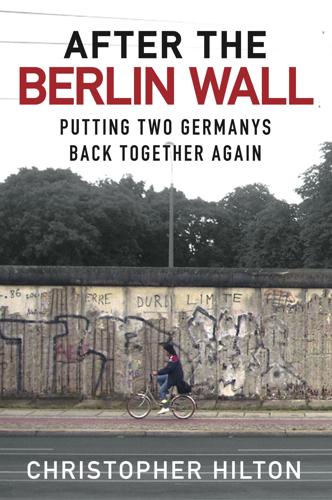
After the Berlin Wall
by
Christopher Hilton
Published 15 Dec 2011
TIMELINE 1945 7 May Germany surrenders 3 July Allied troops take over their four sectors in Berlin 16 July Potsdam Conference begins 2 August Potsdam Conference ends 1946 21 April Communist Party and Social Democrats form the SED (Socialist Unity Party) to rule East Germany 1947 5 June Marshall Plan launched 1948 21 June Deutsche Mark introduced in the West 24 June Berlin blockade and airlift begins 24 July East German Mark introduced 1949 4 April NATO formed 11 May Berlin blockade and airlift ends 24 May FRG (Federal Republic of Germany) founded in the West, merging the American, British and French Zones 7 October GDR (German Democratic Republic) founded in the East from the Soviet Zone, with East Berlin as its capital 1953 16 June GDR workers uprising over increasing work norms 1955 9 May FRG accepted into NATO 14 May Communist states, including the GDR, sign the Warsaw Pact 1958 27 October Walter Ulbricht, GDR leader, threatens West Berlin 10 November Soviet leader Nikita Khruschev says it is time to cancel Berlin’s four-power status 1961 4 June At a summit in Vienna, Khruschev tries to pressure US President John Kennedy to demilitarise Berlin 1–12 August 21,828 refugees arrive in West Berlin 13 August Berlin Wall built 1963 26 June Kennedy visits Berlin and makes his ‘Ich Bin Ein Berliner’ speech 1968 21 August Warsaw Pact countries crush Prague Spring 1970 19 March Willy Brandt visits GDR city Erfurt as part of his Ostpolitik policy 1971 3 May Ulbricht forced to resign, succeeded by Erich Honecker 1972 October Traffic Agreement signed, giving FRG citizens access to the GDR 21 December Basic Treaty signed, the FRG in effect recognising the GDR 1973 18 September The GDR and the FRG admitted to the United Nations 1985 11 March Mikhail Gorbachev elected General Secretary of the Soviet Communist Party 1987 12 June Ronald Reagan speaks at the Brandenburg Gate: ‘Mr Gorbachev, tear down this wall.’ 7–11 September Honecker visits FRG 1989 2 May Hungary opens its border with Austria, allowing GDR holidaymakers to cross 7 May GDR elections with 98.85 per cent for the government and widespread allegations of fraud 4 September Leipzig demonstrations begin 30 September GDR citizens in FRG Prague Embassy told they can travel to the West 6 October GDR fortieth anniversary 18 October Honecker forced to resign, succeeded by Egon Krenz 4 November A million people demonstrate in East Berlin 9 November The Wall opens 29 November Chancellor Helmut Kohl issues plan for a ‘confederation leading to a federation in Germany’ 7 December Krenz resigns.
…
It is so stark it does not require a caption and, like emerging from sunlight, your eyes need time to adjust. At first it seems to be a lunarscape with houses – the apartments – but as your eyes adjust it transforms itself into the Leuschnerdamm which was somewhere else altogether: depending on which side chance had placed you, a frontier community confronting Ronald Reagan’s evil empire or a frontier community confronting the imperialist-fascist-capitalist running dogs. The Wall ran where the dark tarmac holes are – they were supports for an earlier version of it – so the terraced houses and the unkempt pavement were in the West, the cobbled road in the East. The pavement became a gully; the 12ft Wall to one side of it, the apartments and their little gardens to the other.
…
Hildebrandt became a propagandist for non-violent resistance all over the world and published extensively on that as well as The Wall. He loomed as a father figure, slightly eccentric, slightly innocent but right. 8. Interview in July 2008. 9. Lieutenant Oliver North, a U.S. marine, was involved in the Iran-Contra Affair when, during Ronald Reagan’s presidency, he sold weapons clandestinely to Iran. He subsequently became a right-wing commentator, appeared on Fox TV and wrote best-selling books. 10. Ulbricht’s words were used on tall posters on the Western side of The Wall pointing East so the population there could read them: NOBODY HAS ANY INTENTION OF BUILDING A WALL.

Beyond the Wall: East Germany, 1949-1990
by
Katja Hoyer
Published 5 Apr 2023
It didn’t destroy your life.’3 When Peter and his family reached Berlin in the summer of 1987, they found things had changed a fair bit from the unpleasant atmosphere that his predecessors had been exposed to. President Ronald Reagan had delivered a speech in West Berlin in front of the Brandenburg Gate on 12 June 1987, in which he demanded, ‘Mr Gorbachev, tear down this wall!’ But nobody could have foreseen that the fall of the Berlin Wall was just two years into the future. Reagan’s speech was initially just a publicity stunt. The event that did make a difference to the way Peter and his American colleagues were treated in East Germany was Honecker’s visit to Bonn in September.
…
But on the shelves in the West – and that includes our Intershops – there were twenty models.’16 Focusing on microelectronics and rationalization wasn’t enough to heal the GDR’s festering economic wounds. Many Western countries responded to the severe problems caused by the oil crises of the 1970s by introducing cuts to their welfare systems in the 1980s – from Helmut Kohl in West Germany to Margaret Thatcher in the UK and Ronald Reagan in the US. Honecker had no such option. The GDR’s subsidies to essentials such as rent, food and childcare had become a fact of life. When prices for textiles rose briefly in 1977, it had immediately led to stockpiling by disconcerted citizens while rationing of everyday luxuries such as coffee and chocolate also caused consternation.
…
The gathering was a sight to behold: British Prime Minister Margaret Thatcher, Palestinian leader Yasser Arafat, French President François Mitterrand, West German Chancellor Helmut Kohl, Romanian President Nicolae Ceauşescu and the East German leader Erich Honecker were among the dozens of foreign dignitaries gathered in the heart of what US President Ronald Reagan had dubbed the ‘Evil Empire’ almost exactly two years earlier. Notably, the latter was absent, having ‘an awful lot on my plate right now that would have to be set aside’.36 But with the exception of the US, most of the leaders of major capitalist and communist countries had come to Moscow to bury Konstantin Chernenko, seventh General Secretary of the Communist Party of the Soviet Union.
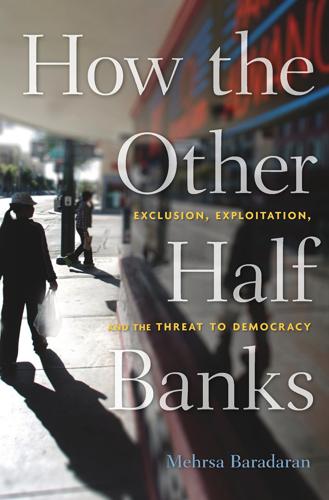
How the Other Half Banks: Exclusion, Exploitation, and the Threat to Democracy
by
Mehrsa Baradaran
Published 5 Oct 2015
The Occupy Wall Street movement embodied this disdain for reckless moneylending with demands that bankers be sent to jail. Their signs could have been written by a modern-day Nehemiah or Andrew Jackson: “Tax Wall Street Leeches,” “Turn Wall Street into Tahrir Square,” “JP Morgan is a Kleptomaniac,” “Jail the Bankers,” “Tear Down this Wall Street,” “Jesus was the 99%,” and “Kick ‘M in the Junk Bonds.”29 (Timothy Geithner dismissed those who were uncomfortable with bailing out banks as demanding “Old Testament Justice,”30 which seems accurate given the admonitions against usury in the book, but the modern state is no longer persuaded by Nehemiah’s arguments.)
…
Something had to change, but deregulation was by no means the only option. The era also coincided with a conservative political revival in America and Europe and a deregulatory philosophy in other sectors. Ronald Reagan wanted to get the government off the people’s backs, and the banking sector needed exactly that. But deregulation was not just about Ronald Reagan. A decade later, Bill Clinton finished what Reagan had started. Additionally, other changes occurred in the United States that explain the ideological transformations of the time, such as a historic rise of income and wealth disparity and an economic boom.
…
An ideological capture of key policymakers—Larry Summers, Robert Rubin, Alan Greenspan, Timothy Geithner, Henry Paulson, and others—who had spent their careers marinating in the industry, working in “captured” regulatory agencies, or captivated by extreme laissez-faire ideology, also took place during this era. Agencies also went along with or even pushed deregulation. The OCC and the OTS, agencies funded by their regulated entities (their customers), courted them through lax regulations. The executive branch was also sold on the vision of finance free from state control. Each president, from Reagan to Obama, operated with a similar view about the dangers of overregulation. Each also received significant funds from Wall Street. Agency capture is perhaps one of the most significant aspects of this political story. Because of the increased power and size of these firms, government regulators have become impotent against them—that is, those who have continued to fight.
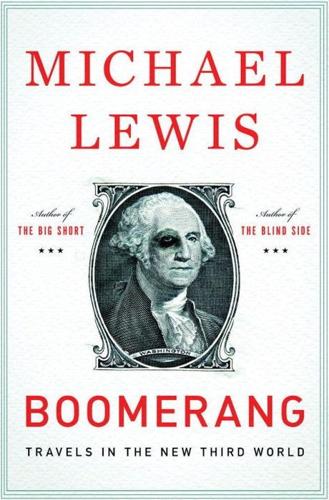
Boomerang: Travels in the New Third World
by
Michael Lewis
Published 2 Oct 2011
The Commerzbank chairman, Klaus-Peter Müller, actually works in Berlin, inside another very German kind of place. His office is attached to the side of the Brandenburg Gate. The Berlin Wall once ran, roughly speaking, right through the middle of it. One side of his building was once a field of fire for East German border guards, the other a backdrop for Ronald Reagan’s famous speech. (“Mr. Gorbachev, open this gate. Mr. Gorbachev, tear down this wall!”) From looking at it you would never guess any of this. “After the wall came down we were offered the chance to buy it back,” says Müller. “This building had been ours before the war. But the condition was that we had to put everything back exactly the way it was.
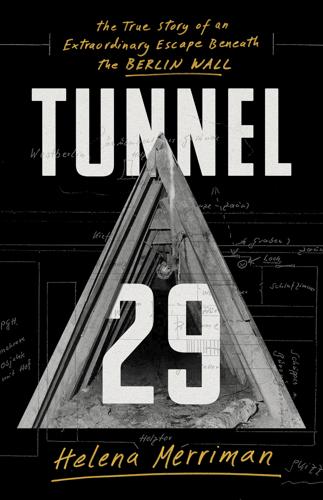
Tunnel 29
by
Helena Merriman
Published 24 Aug 2021
Gorbachev turned his back on Stalinism, reforming Russia through his twin policies of glasnost (opening society) and perestroika (economic reform). This wasn’t so much idealism as pragmatism – the Soviet Union was in the middle of an economic crisis and this was Gorbachev’s way out. The previous year, in 1988, President Reagan had visited Gorbachev in Moscow, where the two men announced they were now ‘friends’, despite Reagan’s visit to Berlin, where he’d called on Mr Gorbachev to ‘tear down this Wall!’ Then a few months ago, in July 1989, Mikhail Gorbachev had announced that his army would no longer prop up communist governments in Eastern Europe; people could choose their own rulers. The ‘Sinatra doctrine’, he jokingly called it – people could now do things ‘their way’.
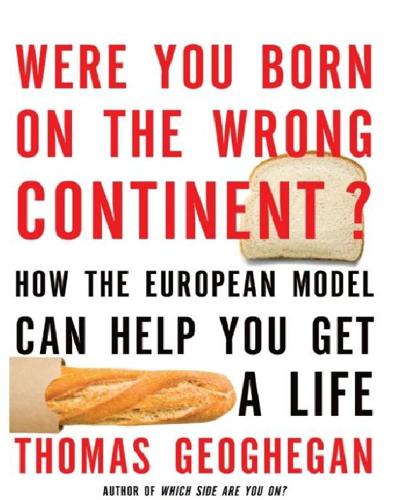
Were You Born on the Wrong Continent?
by
Thomas Geoghegan
Published 20 Sep 2011
“Okay,” I said, “but let’s go somewhere else.” “East or west?” “East!” I said. I knew it had advanced beyond a wannabe Mister Softee truck, and I felt the thrill of going into the “Communist” darkness, but we still ended up at a yuppie-type trattoria. The East was under construction. When Reagan said, “Mr. Gorbachev, tear down this Wall,” he spoke on behalf of real-estate developers from all over Europe. I never saw so many construction sites: big cranes bobbing like Big Bird even at midnight in Berlin. They had overbuilt. Whereas once the East-was-Red, now the East was in the red, in a way unimaginable for Germans, and in the years to come, many people like my friend Father L. would say: “Berlin is broke.”
…
Here was the chain of reasoning when Gerhard Schroeder became the German chancellor: (1) he’s really just like Tony Blair, (2) Blair is really just like Clinton, (3) Clinton is really just like Bush (the first one). And the first Bush was like Reagan. So when Schroeder was elected, it just showed Europe was going to the right, and they were all more or less like Reagan. “Wait: isn’t Schroeder a socialist?” Yes. They’re all socialists! That’s why Europe is collapsing! It’s collapsing. It’s collapsed. Everyone is unemployed. It’s becoming just like America anyway. I knew a bit more than that. As a union-side labor lawyer, I wanted social democracy to succeed.
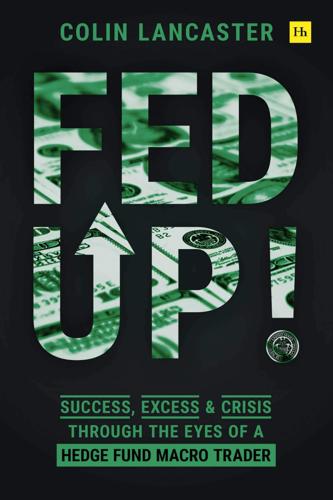
Fed Up!: Success, Excess and Crisis Through the Eyes of a Hedge Fund Macro Trader
by
Colin Lancaster
Published 3 May 2021
I think back to how I ended up here in the supposed center of the financial universe at the mercy of the market gods. I started as an undergrad with an eye toward law school, expecting to be some sort of litigator. But this was 1990, and the world was changing. Only two and a half years after President Reagan stood at the Brandenburg Gate imploring Mikhail Gorbachev to “Tear down this wall,” the wall had fallen, and with it, the Soviet Union’s credibility. The Evil Empire was teetering like a Jenga tower, and people were transfixed on what the world would look like once it finally imploded. Three hundred million people freed from the binds of communism, countries reasserting their autonomy, new frontiers, and new markets.
…
It’s a timeline of the last forty years, showing who was the Fed chair at the time, and stock market returns over the entire period. There’s also a shaded section showing periods when the US economy was in recession. “I’ll start with Paul Volcker, who died yesterday and who is the first one I can remember from my childhood. He was chairman of the Fed under Jimmy Carter and Ronald Reagan from ‘79 to ‘87, back when you could work for both a Democratic and Republican boss. It was a messy time. America was dealing with oil shocks, the fallout from the Vietnam War, the end of the Bretton Woods system, and then massive tax cuts. Inflation spiked when Nixon decided to leave Bretton Woods, the gold standard.

Berlin
by
Andrea Schulte-Peevers
Published 20 Oct 2010
Walter Ulbricht, East German head of state; 15 June 1961 ‘Berlin is the testicle of the West. When I want the West to scream, I squeeze on Berlin.’ Nikita Khrushchev, Soviet communist party secretary (1953–64) ‘Ich bin ein Berliner.’ John F Kennedy, US president; 26 June 1963 ‘Mr Gorbachev, tear down this Wall!’ Ronald Reagan, US president; 12 June 1987 ‘Private travel into foreign countries can be requested without conditions…Permission will be granted instantly.’ Günter Schabowski, East German government official; 9 November 1989 * * * The fun came to an instant end when the US stock market crashed in 1929, plunging the world into economic depression.
…
East and West Germany recognise each other’s sovereignty in the Basic Treaty. 1976 The Palace of the Republic, which houses the GDR parliament and an entertainment centre, opens on 23 April on the site where the royal Hohenzollern palace stood for 500 years. 1987 East and West Berlin celebrate the city’s 750th birthday separately. On 12 June Ronald Reagan visits the city, proclaiming ‘Mr Gorbachev, tear down this Wall!’ while standing in front of the Brandenburg Gate. 1989 Bye, bye Berlin Wall and hello Love Parade! What would grow into the world’s biggest street party begins modestly with one truck and 150 ravers. 1991 Members of the Bundestag (German parliament) vote to reinstate Berlin as Germany’s capital and to move the federal government here.
…
It’s a simple, geometric space of lawns dappled with beech and oak trees. In summer, a rather commercial beach bar called Capital Beach sets up shop below the pedestrian-only bridge. Return to beginning of chapter BRANDENBURGER TOR & AROUND Here’s a trivia question for you: Who said ‘Mr Gorbachev – tear down this wall!’? Answer: former US president Ronald Reagan, during a speech in 1987, with the Brandenburger Tor trapped behind the Berlin Wall as a backdrop. Two years later, the Wall was history and the famous gate went from symbol of division to symbol of a reunited Germany. Since then, Pariser Platz, the former wasteland east of the gate, has resumed its historic role as the capital’s ‘reception room’ and is framed by embassies, banks and hotels.
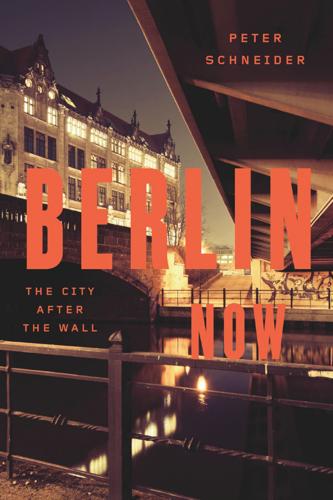
Berlin Now: The City After the Wall
by
Peter Schneider
and
Sophie Schlondorff
Published 4 Aug 2014
EPILOGUE In early March 2013, a demonstration at the East Side Gallery brought about an unexpected turn of events. Unlikely slogans could be heard near the section by Mühlenstraße in the Friedrichshain district: “The wall must stay,” groups of demonstrators shouted, while others chanted, in English, “Mr. Wowereit, don’t tear down this wall!”—a play on Ronald Reagan’s famous call from 1987, “Mr. Gorbachev, tear down this wall!” The reason for the demonstration was an investor’s attempt to cut out a sixty-two-foot-long section of the East Side Gallery to clear the way for the entrance to a new apartment tower. The plans called for the removed sections of the Hinterlandmauer to be set up again at another location.
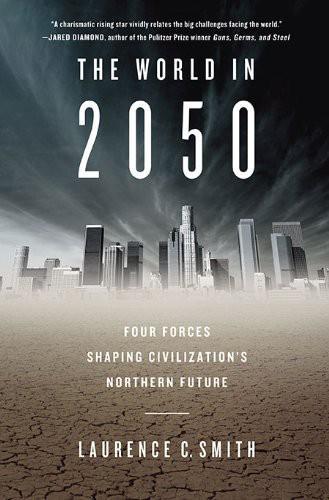
The World in 2050: Four Forces Shaping Civilization's Northern Future
by
Laurence C. Smith
Published 22 Sep 2010
Our fifth billion came in 1987, now just twelve years after the fourth. The Dow Jones Industrial Average closed above 2,000 for the first time in history and the Irish rock band U2 released their fifth album, The Joshua Tree. Standing outside Berlin’s Brandenburg Gate, U.S. president Ronald Reagan exhorted Soviet leader Mikhail Gorbachev to “tear down this wall.” The world’s last dusky seaside sparrow died of old age on a tiny island preserve in Florida’s Walt Disney World Resort. A self-absorbed college sophomore at the time, I only noticed The Joshua Tree. Our sixth billion arrived in 1999. This is now very recent history.
…
Up until the demise of the Bretton Woods monetary regulatory system in the early 1970s, it presided for three decades over what some have called the “golden age of controlled capitalism.”29 But by the 1980s, “controlled capitalism” had fallen to a revolution of “neoliberalism”—the deregulation and elimination of tariffs and other controls on international trade and capital flows. The neoliberalism movement was championed by British prime minister Margaret Thatcher and U.S. president Ronald Reagan, but was rooted in the ideas of Adam Smith. Throughout the 1980s and 1990s the IMF, WTO, and World Bank aggressively pursued agendas of liberalizing (deregulating) trade markets around the world, vigorously urged on by the United States.30 A common tactic was to require developing countries to accept neoliberal reforms to qualify for IMF or World Bank loans.
…
See demography; specific countries Portugal Powell, James Lawrence Primorsky Territory Prince Edward Island Pripyat, Ukraine protectionism Prudhoe Bay Putin, Vladimir Qatar Quantification Settlement Agreement Québec Queen Elizabeth Island radiation railroads rain forests rainfall Reagan, Ronald RechargeIt initiative regional corporations renewable energy resources. See also specific energy types Republic of Korea reserve-to-production ratios reservoirs resource demand. See also specific resource types: and aboriginal peoples; and the Arctic economy; connection to other global forces; and the economic slowdown; and electric vehicles; and Far East Russia; as global force; historical debate on; and human settlement patterns; and hydrocarbon cities; and inertia of global forces; mineral depletion rates; and prospects for NORCs; and proven resource levels; and renewable energy; and reserve levels; and the resource curse; and the Russian Far East; and traditional resources; and urbanization; and water consumption; and West Siberian Lowlands Resource Wars (Klare) Reykjavik, Iceland Ricardo, David ringed seals Río Negro Rising Powers, Shrinking Planet: The New Geopolitics of Energy (Klare) risk assessment rivers.

Pocket Berlin
by
Andrea Schulte-Peevers
Published 15 Mar 2023
A few Berlin Wall segments outside the northern S-Bahn station entrance serve as reminders. 6Brandenburger Tor The Brandenburg Gate was where construction of the Wall began. Many heads of state gave speeches in front of it, including former US president Ronald Reagan who, in 1987, uttered the famous words: ‘Mr Gorbachev, tear down this wall!’ 7Mauer-Mahnmal In the basement of the Marie-Elisabeth-Lüders-Haus, this art installation (www.mauer-mahnmal.de) by Ben Wagin (1930–2021) consists of original segments of the Berlin Wall, each painted with the number of people killed at the Wall during each of the 28 years it divided the city.
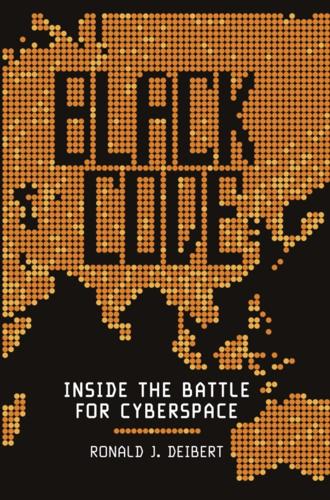
Black Code: Inside the Battle for Cyberspace
by
Ronald J. Deibert
Published 13 May 2013
They also legitimize the growing desire of autocratic and authoritarian regimes to subject cyberspace to territorialized controls, and the censorship and surveillance practices that go along with them. By our actions in the West, we contribute to this trend abroad. We preach about the need for closed autocratic societies to “open up,” or, as Ronald Reagan famously thundered, to “tear down this wall,” and yet vis-à-vis cyberspace we are contributing to state censorship and surveillance. Although states were once thought to be powerless in the face of the Internet, the giants have awoken from their slumber. Left unchecked, these trends will result in the gradual disintegration of what is in the long-term interest of all citizens: an open and secure commons of information on a planetary scale.
…
If we can undertake acts of sabotage without killing or physically harming people, this does seem to represent progress, a new, gentler form of warfare. In this respect, the argument is the exact inverse of the neutron bomb debates of the 1970s and 1980s. The neutron bomb was an enhanced radiation weapon under development during the Carter and Reagan administrations that would kill people while leaving buildings and infrastructure intact, through a highly concentrated dispersal of radioactive material. (Soviet General Secretary Leonid Brezhnev memorably described it as a “capitalist bomb” because it would destroy people, but not property.) Stuxnet-type weapons, on the other hand, are more like something inspired by Unabomber Ted Kaczynski: they would target industrial-technological systems, but leave people alone.
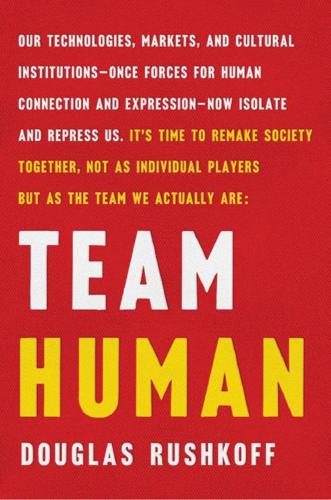
Team Human
by
Douglas Rushkoff
Published 22 Jan 2019
We are not advancing toward some new, totally inclusive global society, but retreating back to nativism Marshall McLuhan, Understanding Media (Cambridge, MA: MIT Press, 1994). Even 9/11 was a simultaneously experienced, global event Jean-Marie Colombani, “Nous Sommes Tous Américains,” Le Monde, September 12, 2001. At the height of the television media era, an American president Ronald Reagan, “Tear Down This Wall!” speech, June 12, 1987. demand the construction of walls Donald Trump, speech, Phoenix, August 31, 2016. 41. In 1945, when Vannevar Bush imagined the “memex,” on which computers were based Vannevar Bush, “As We May Think,” The Atlantic, July 1945. Similar tensions are rising in India, Malaysia, and Sudan Kevin Roose, “Forget Washington.
…
Instead of celebrating more racial intermingling, we find many yearning for a fictional past when—people like to think—our races were distinct, and all was well. At the height of the television media era, an American president could broadcast a speech in front of the Brandenburg Gate in Berlin and demand that Russia “tear down this wall.” No more. Politicians of the digital media environment pull out of global trade blocs, and demand the construction of walls to enforce their countries’ borders. This is very different from the television environment, which engendered a “big blue marble” melting pot, hands-across-the-world, International Space Station, cooperative internationalism that still characterizes our interpretations of geopolitics.

Lonely Planet Pocket Berlin
by
Lonely Planet
and
Andrea Schulte-Peevers
Published 31 Aug 2012
Outside the northern S-Bahn station entrance are a few Berlin Wall segments with panels pointing to other Wall memorial sites and future Wall-related projects. Brandenburg Gate The Brandenburg Gate (Click here) was where construction of the Wall began. Many statesmen gave speeches in front of it, perhaps most famously former US president Ronald Reagan who, in 1987, uttered the words: ‘Mr Gorbachev – tear down this wall!’. Two years later, the Wall was history. Art Installation On the riverwalk level of the Marie-Elisabeth-Lüders-Haus, which houses the parliamentary library, an art installation by Ben Wagin features original Wall segments, each painted with a year and the number of people killed at the border in that year.
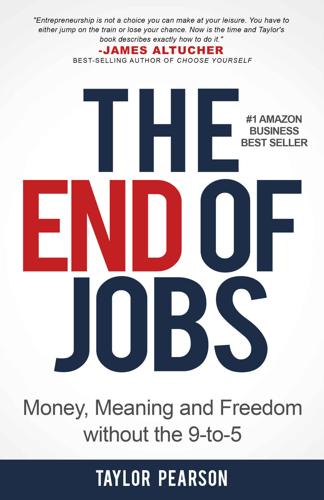
The End of Jobs: Money, Meaning and Freedom Without the 9-To-5
by
Taylor Pearson
Published 27 Jun 2015
The moments which stand out in their lives are those of bold pronouncements and plans to realize them. In 1962, President Kennedy defined the future of space exploration and a country rallied behind him. “We choose to go to the moon in this decade and do the other things, not because they are easy, but because they are hard.”63 President Reagan defined the future of a unified Germany: “Mr. Gorbachev, tear down this wall.” Martin Luther King had a dream and marched on the nation’s capital to make it a reality. We have abdicated this responsibility. Thiel sees this in the proliferation of “wealth re-arrangers” in today’s society. Massive industries, from law to finance, are dedicated not to creating more wealth but to simply moving money around in a circle.
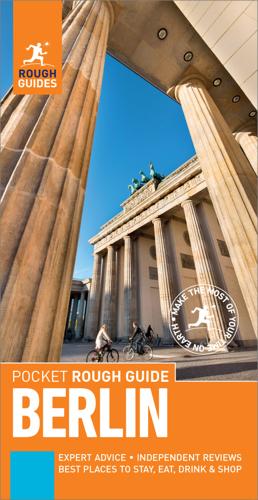
Pocket Rough Guide Berlin (Travel Guide eBook)
by
Rough Guides
Published 16 Oct 2019
June 1963 US President John F. Kennedy visits West Berlin, delivering his famous speech, “Ich bin ein Berliner”. 1972 Access is guaranteed across East Germany to West Berlin with the Four Powers Agreement. 1987 During his second Berlin visit, Ronald Reagan makes a speech in front of the Brandenburg Gate, demanding Mr Gorbachev “tear down this wall!” 1989 Following mass demonstrations across East Berlin, the border crossings are finally opened on November 9. October 3, 1990 The two parts of Berlin are unified as part of the Federal Republic of Germany. 1997 Peter Eisenman’s controversial design for a Memorial to the Murdered Jews of Europe is chosen. 1999 Berlin becomes capital of a reunified Germany and the German government and parliament begin their work in Berlin. 2005 Openly gay mayor Klaus Wowereit dubs Berlin “poor but sexy”, which becomes a slogan for the city. 2006 The new Hauptbahnhof is opened. 2008 Tempelhof airport is officially closed; the surrounding area is later turned into a public park. 2009 Twenty years since the fall of the Wall is celebrated with a “Festival of Freedom”.
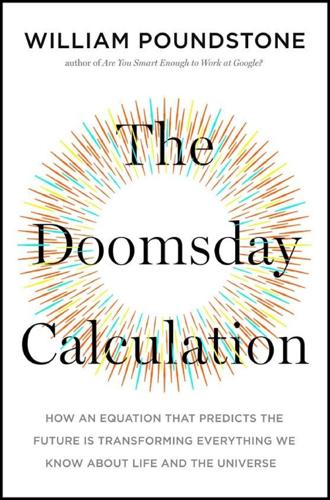
The Doomsday Calculation: How an Equation That Predicts the Future Is Transforming Everything We Know About Life and the Universe
by
William Poundstone
Published 3 Jun 2019
He devised a simple trick for estimating how long the Berlin Wall would stand. He did the math in his head and announced his prediction to a friend, Chuck Allen. The wall would stand at least two and two-thirds more years but no more than twenty-four more years, he said. Gott went back to America. In 1987 President Ronald Reagan demanded, “Mr. Gorbachev, tear down this wall!” From 1990 to 1992 the wall was demolished. That was twenty-one to twenty-three years after Gott’s prediction and within the range he announced. Gott called his secret the “delta t argument.” “Delta t” means change in time. It’s also known as the Copernican method, after Nicolaus Copernicus, the great Polish astronomer of the Renaissance.
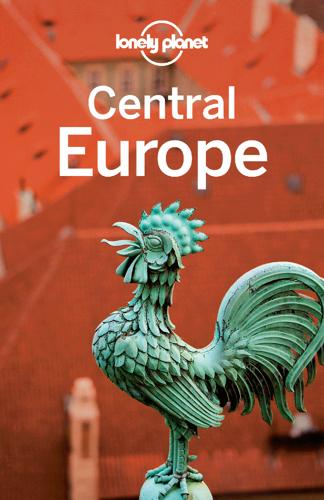
Central Europe Travel Guide
by
Lonely Planet
Mitte (Berlin) Top Sights Altes MuseumE5 Brandenburg GateB6 FernsehturmG5 Hamburger BahnhofA2 PergamonmuseumE4 ReichstagA5 Sights 1Alte NationalgalerieE4 2BebelplatzD6 3Berliner DomF5 4BodemuseumE4 5Deutsches Historisches MuseumE5 6Hackesche HöfeF3 7Holocaust MemorialB6 8Humboldt UniversityD5 9Neue Synagogue & Centrum JudaicumE3 10Neues MuseumE5 11World Time ClockH4 Sleeping 12Arcotel VelvetC3 13Circus HostelF2 14Circus HotelF2 15EastsevenG1 16Garden Hotel HonigmondC1 17Hotel Adlon KempinskiB6 18Hotel HonigmondD2 19Lux 11G3 20Wombat's City HostelG3 Eating 21AsselD3 22La FoccaceriaF1 23Monsieur VuongG3 24Sankt OberholzF2 Drinking 25ReingoldC2 Entertainment 26Berliner EnsembleC4 27Kaffee BurgerG2 28Staatsoper Unter den LindenE6 29WeekendH4 Shopping 30Berlin Art & Nostalgia MarketE5 31Galeries LafayetteD6 Sights Brandenburg Gate LANDMARK (Brandenburger Tor; Click here ; Pariser Platz; S-Bahn Unter den Linden) Finished in 1791 as one of 18 city gates, the neoclassical Brandenburg Gate became an East-West crossing point after the Berlin Wall was built in 1961. A symbol of Berlin’s division, it was a place US presidents loved to grandstand. John F Kennedy passed by in 1963. Ronald Reagan appeared in 1987 to appeal to the Russian leader, ‘Mr Gorbachev, tear down this wall!’. In 1989 more than 100,000 Germans poured through it as the wall fell. Five years later, Bill Clinton somewhat belatedly noted: ‘Berlin is free’. The crowning Quadriga statue, a winged goddess in a horse-drawn chariot (once kidnapped by Napoleon and briefly taken to Paris), was cleaned in 2000 along with the rest of the structure.

Germany Travel Guide
by
Lonely Planet
Outside the northern S-Bahn station entrance, several Berlin Wall segments provide information about other wall memorial sites and future wall-related projects. Continue north to the Brandenburger Tor where construction of the wall began in the wee hours of 13 August 1961. Many statesmen exhorted against communism in front of it, including Ronald Reagan who, in 1987, uttered the famous words: ‘Mr Gorbachev – tear down this wall!’. Two years later, the Berlin Wall was history. Tours Bus You’ll see them everywhere around town: colourful buses (in summer, often open-top double-deckers) that tick off all the key sights on two-hour loops with basic taped commentary in eight languages.